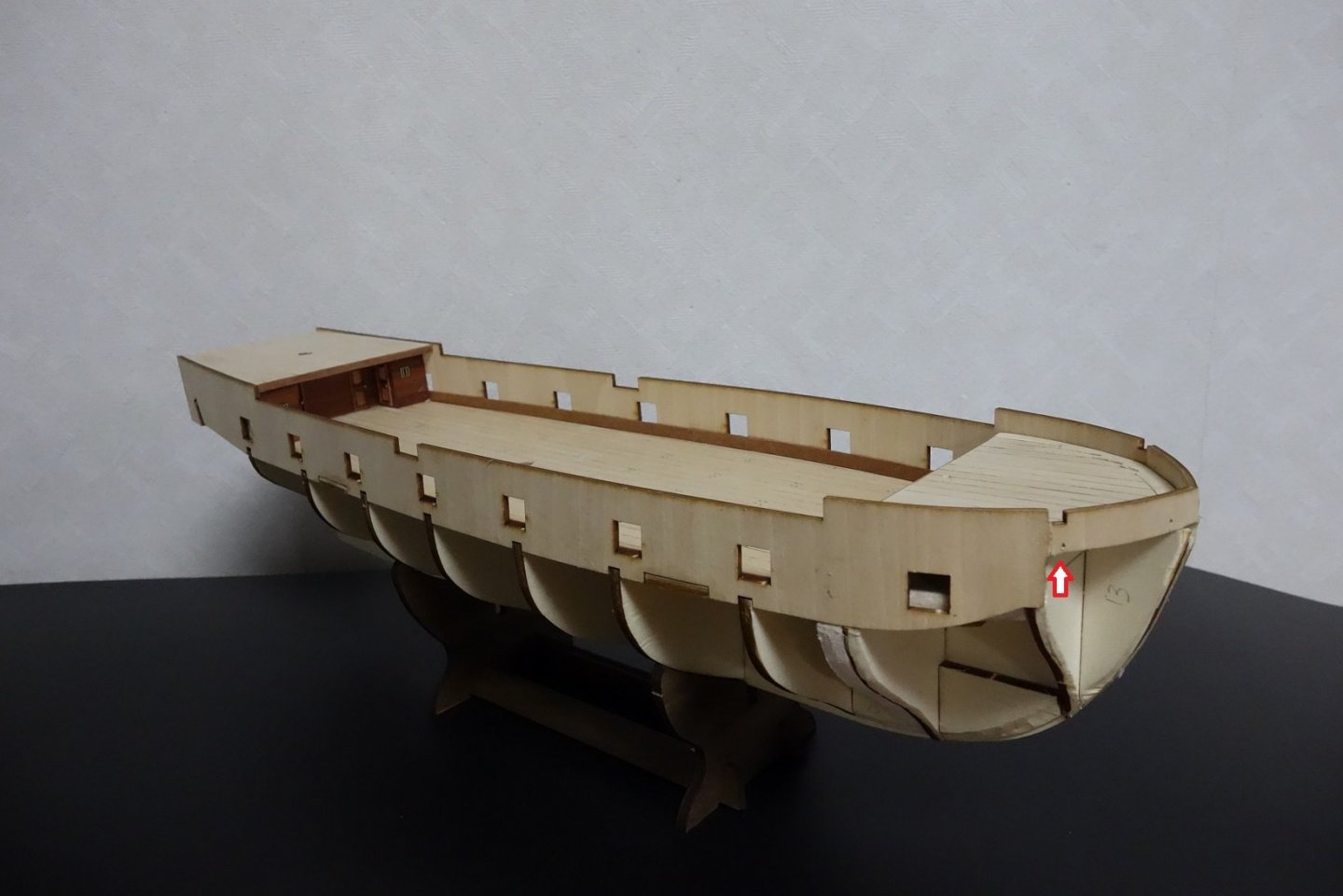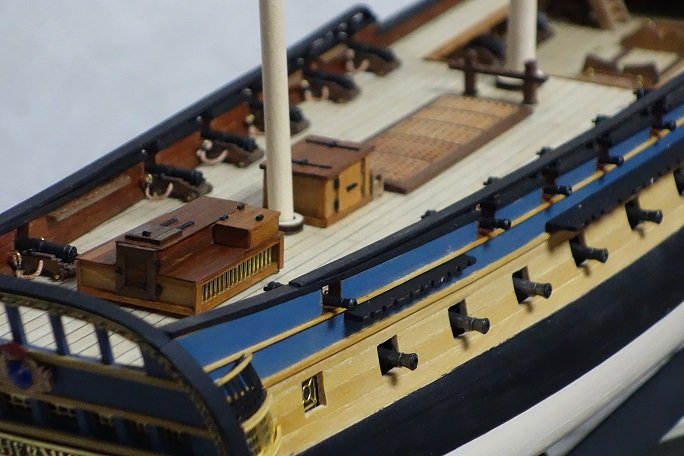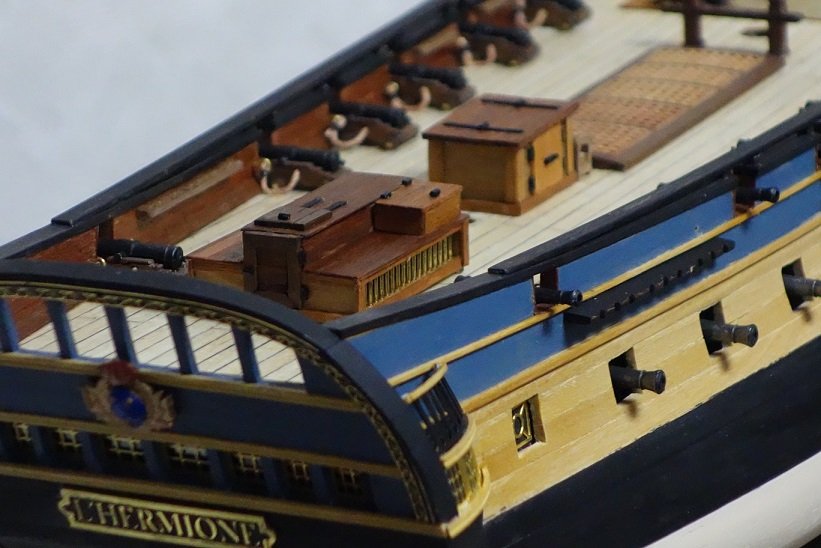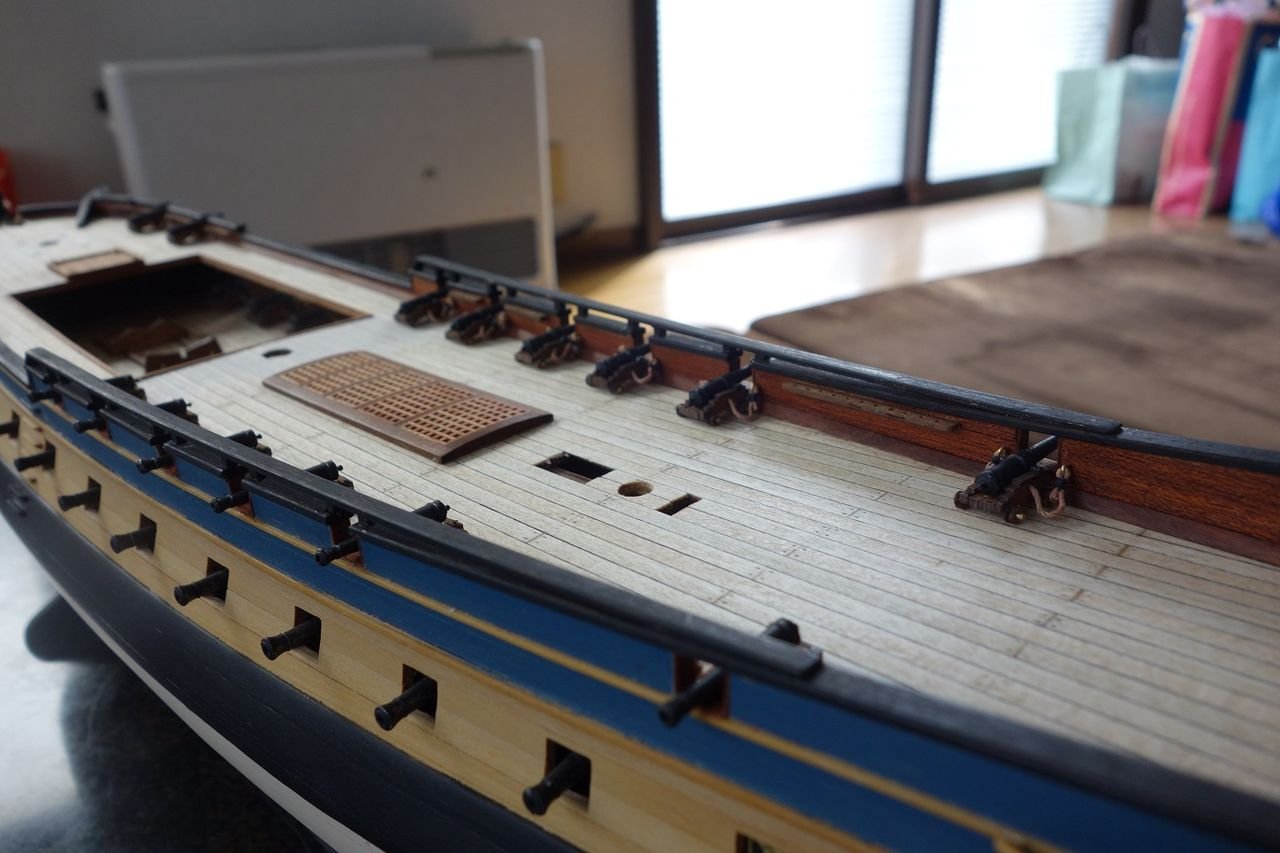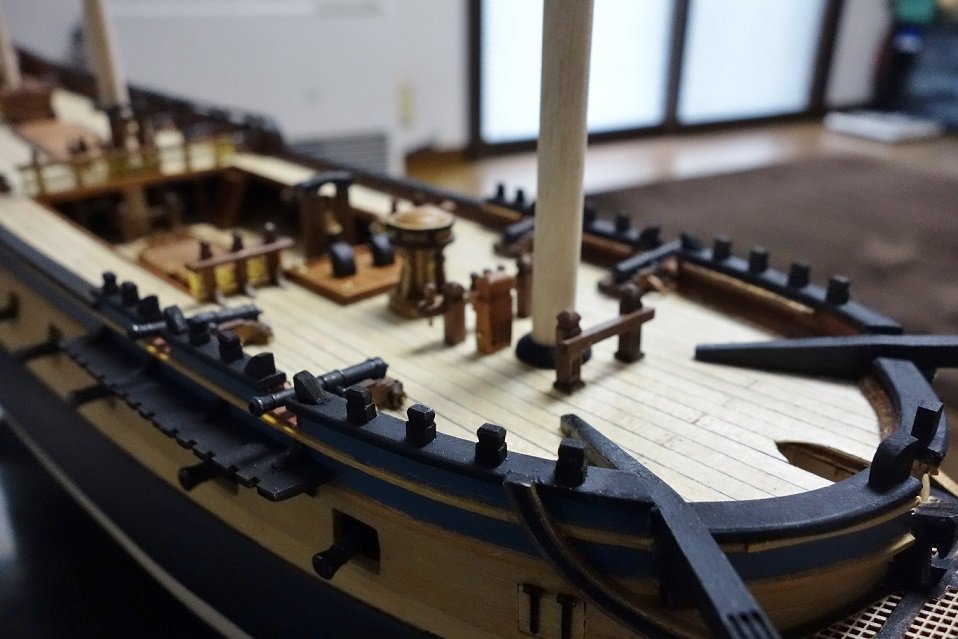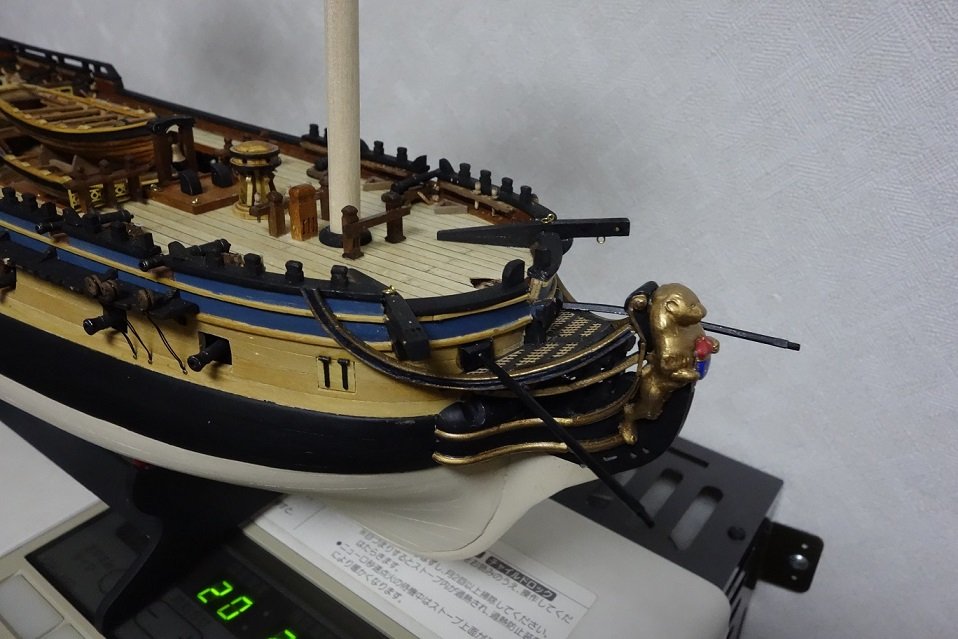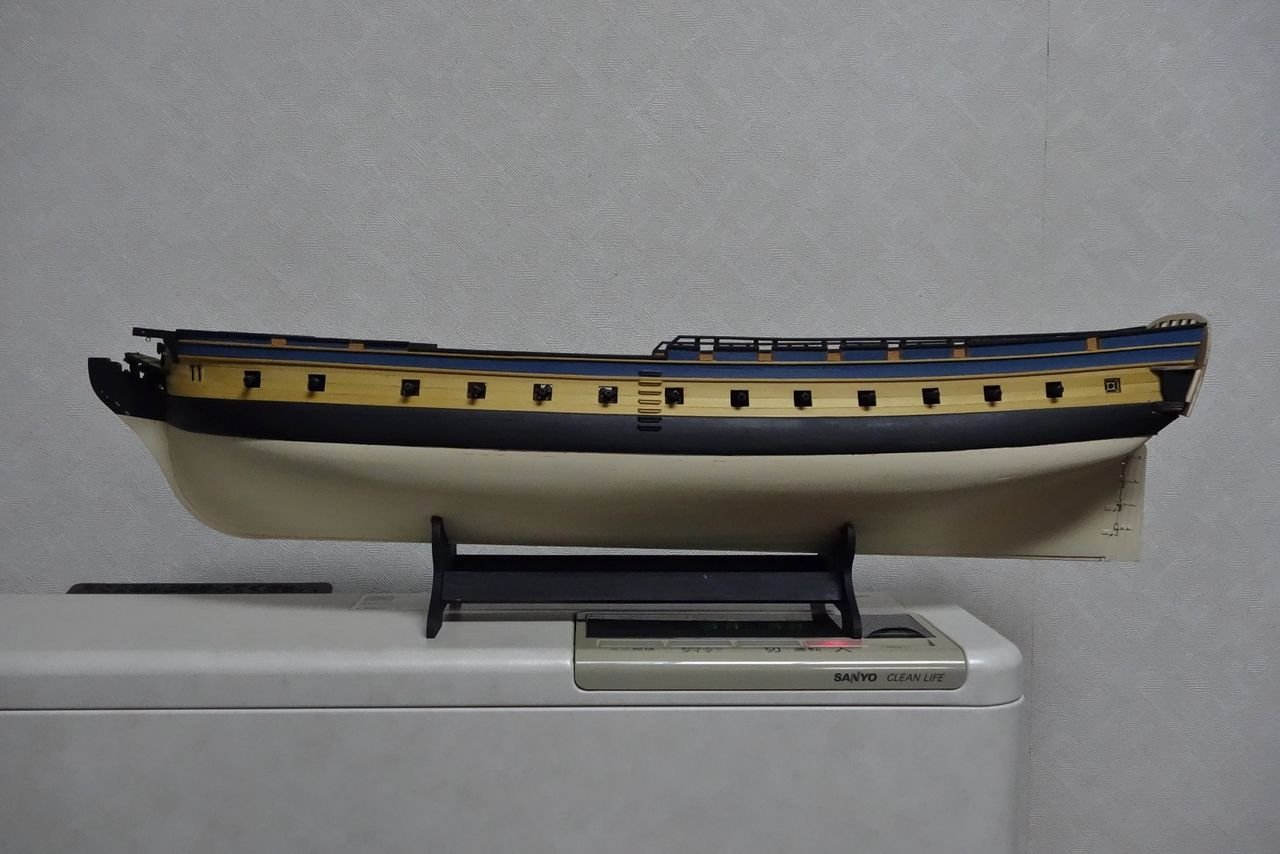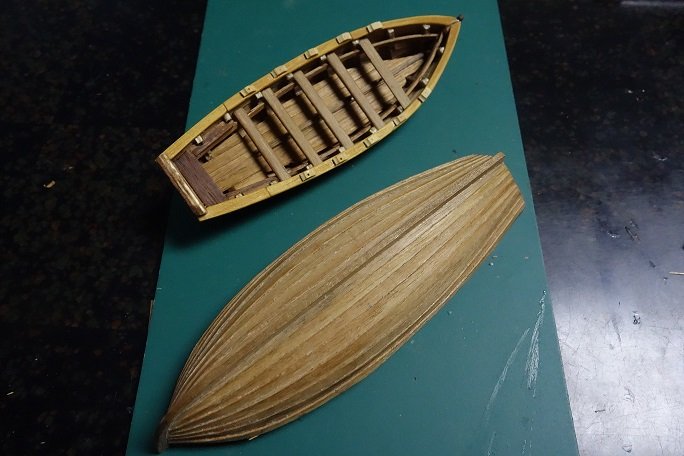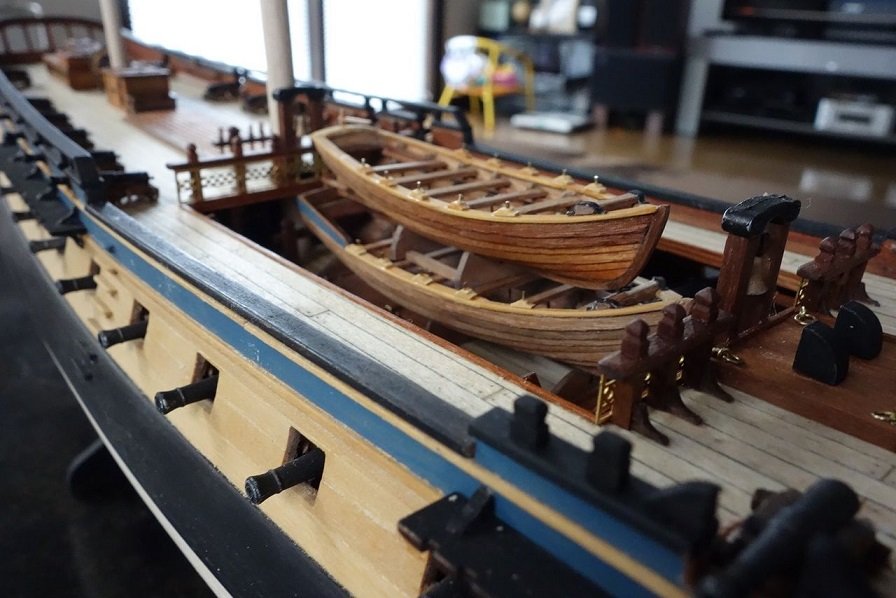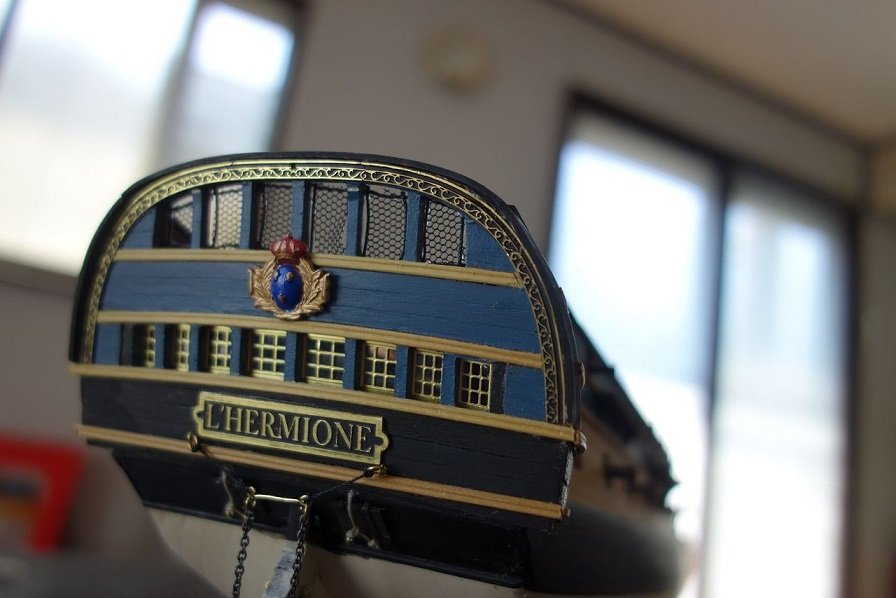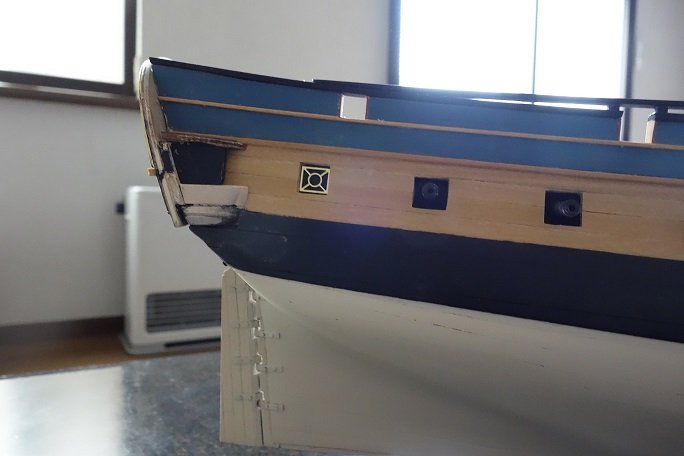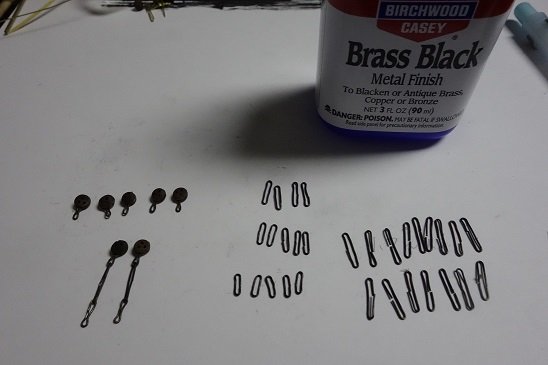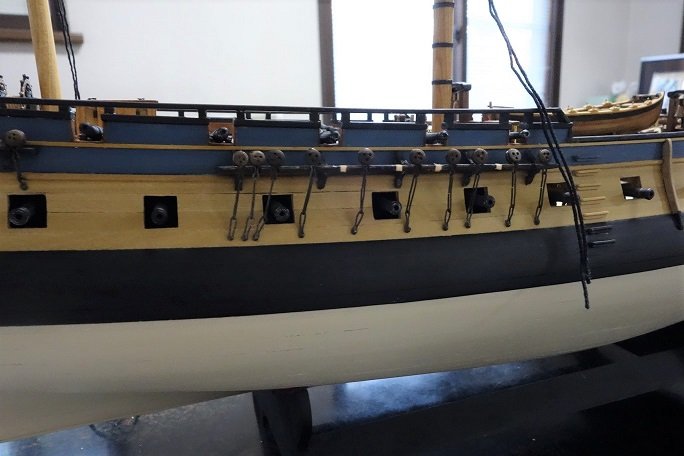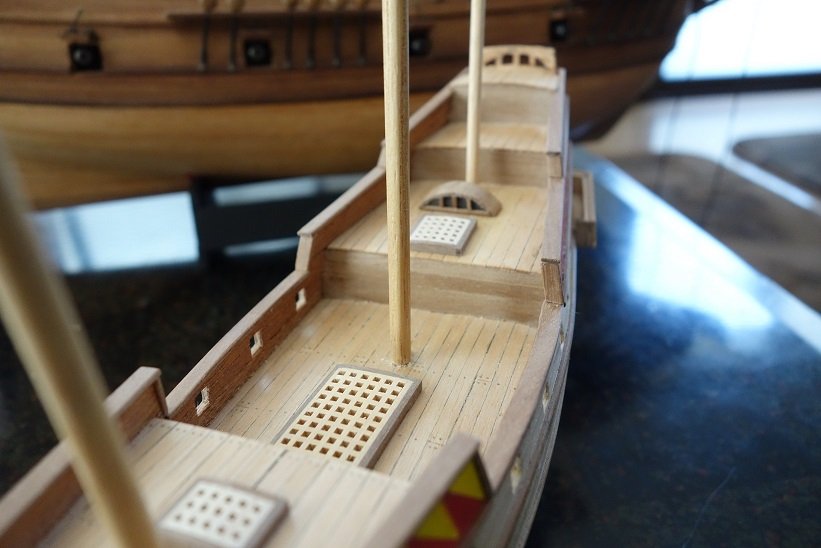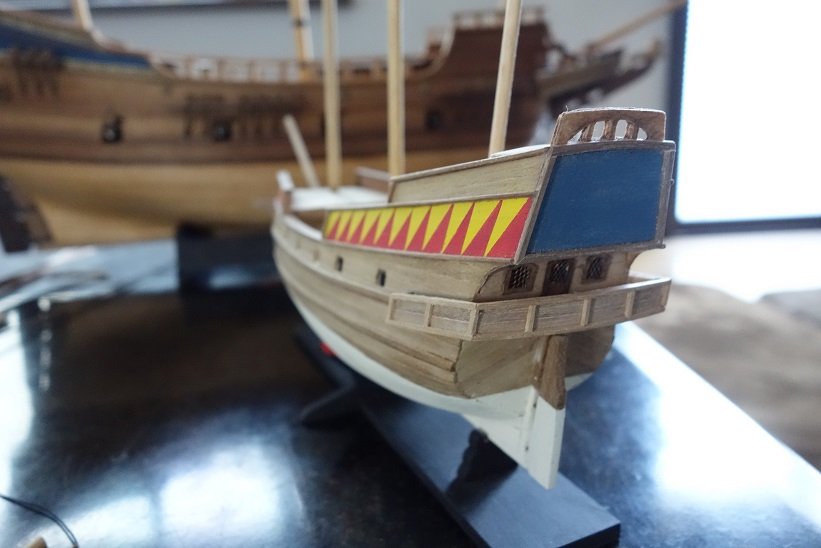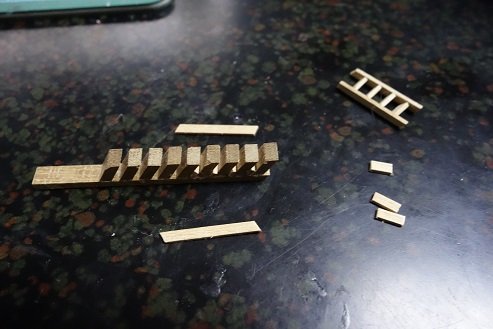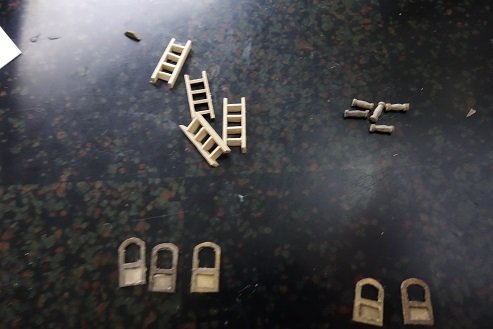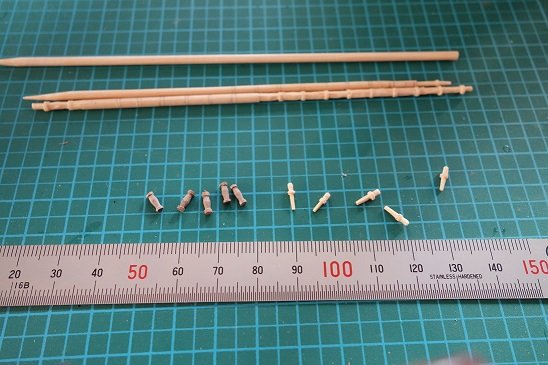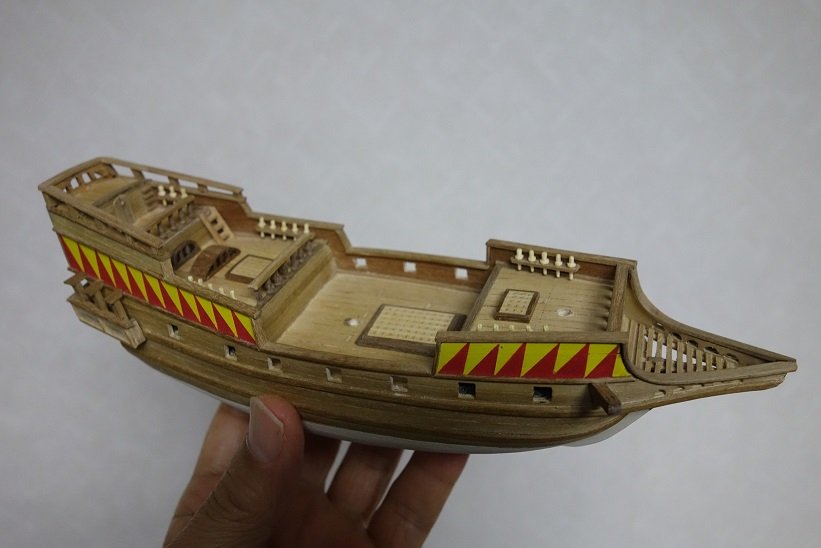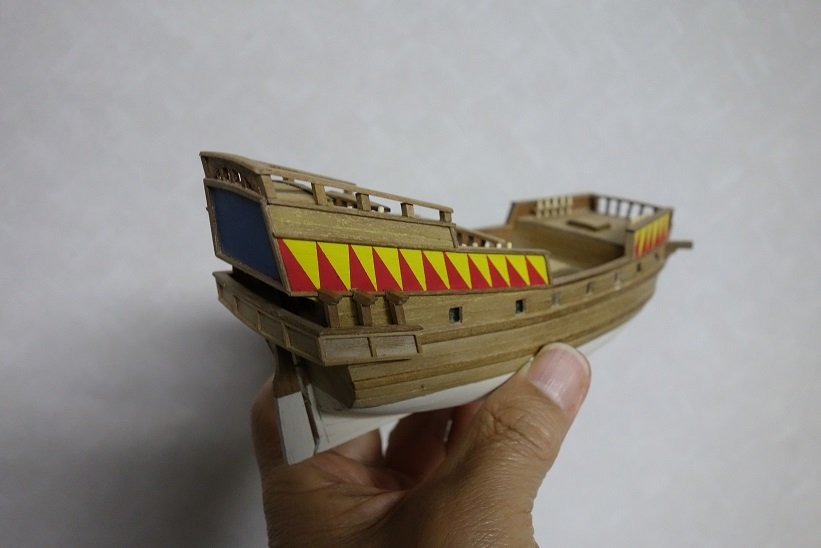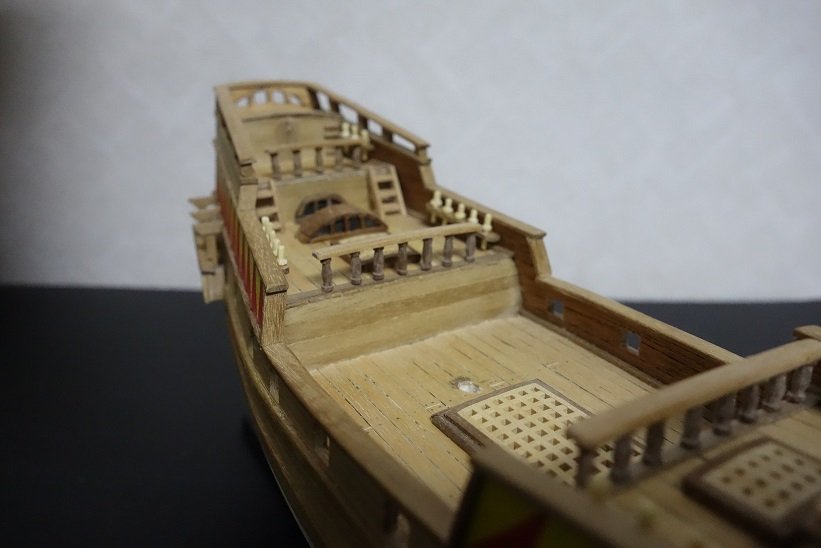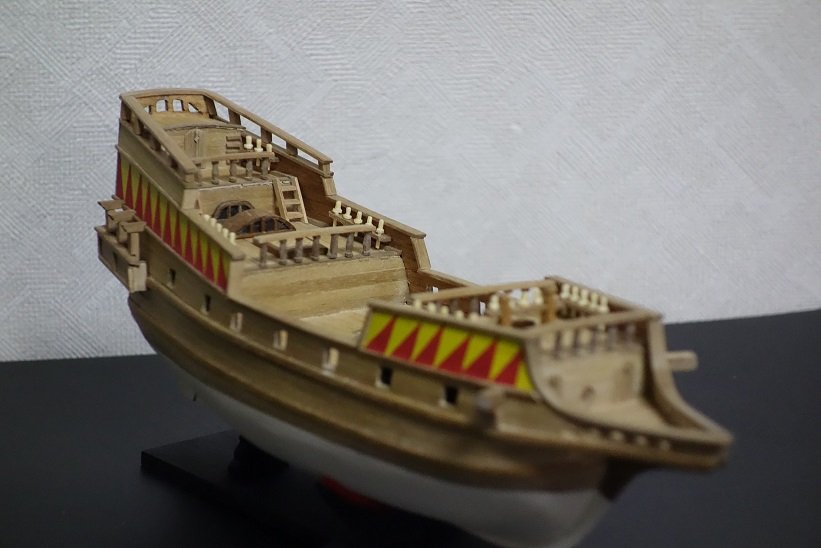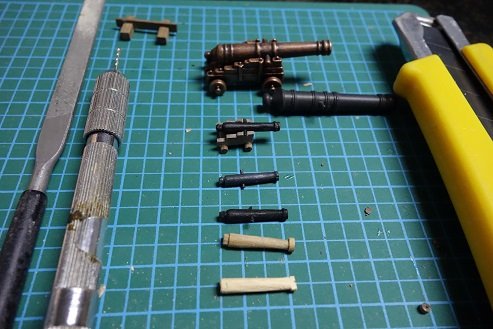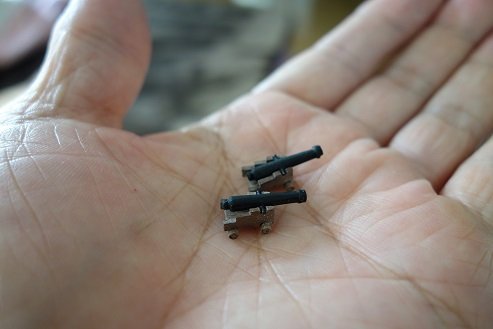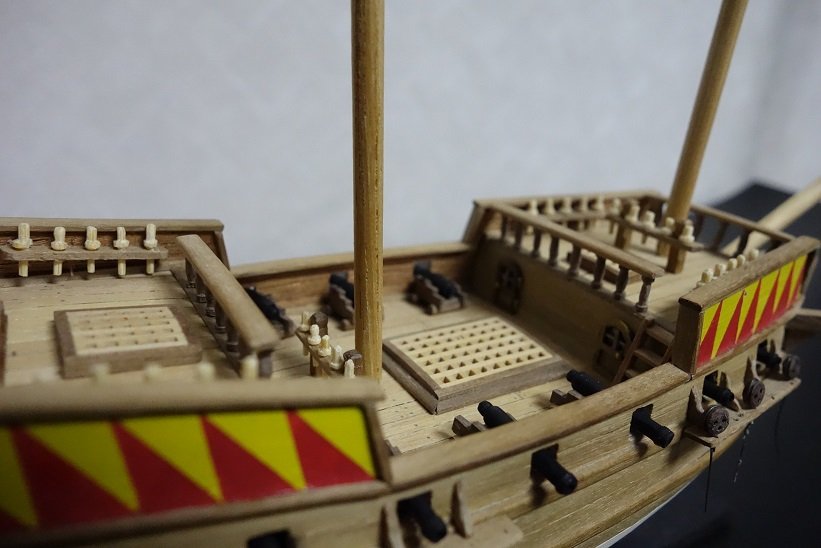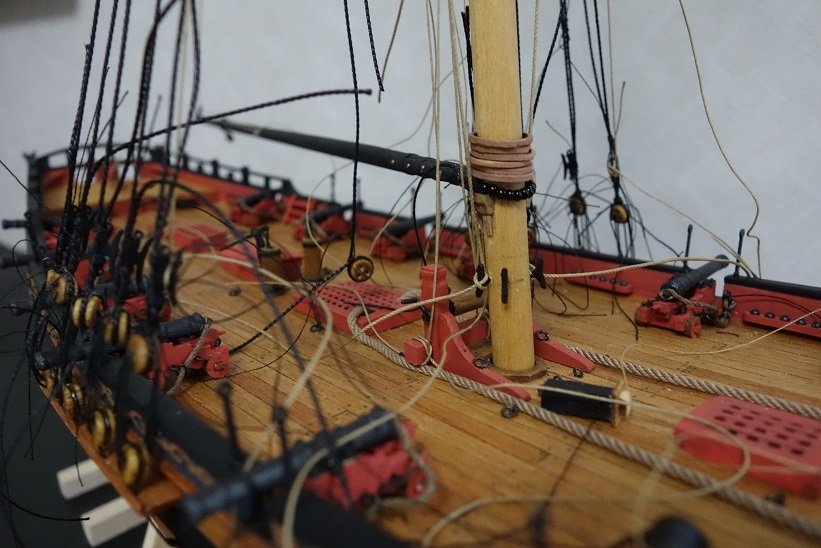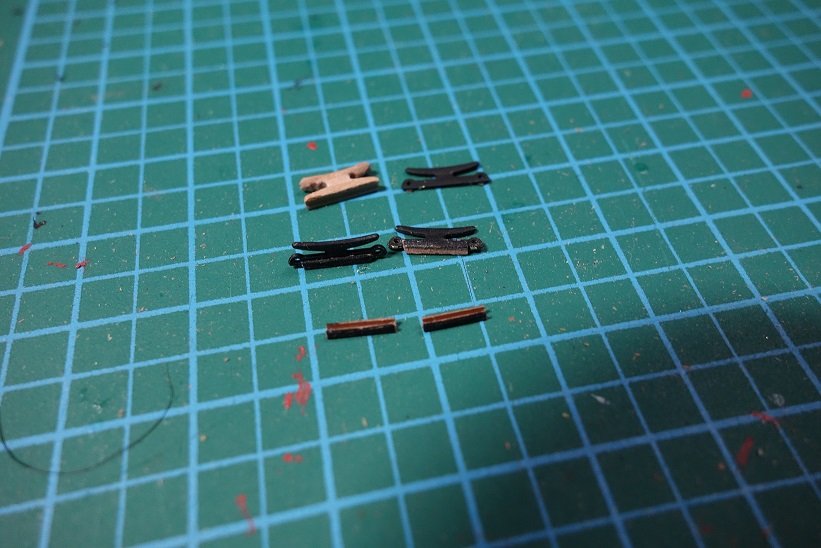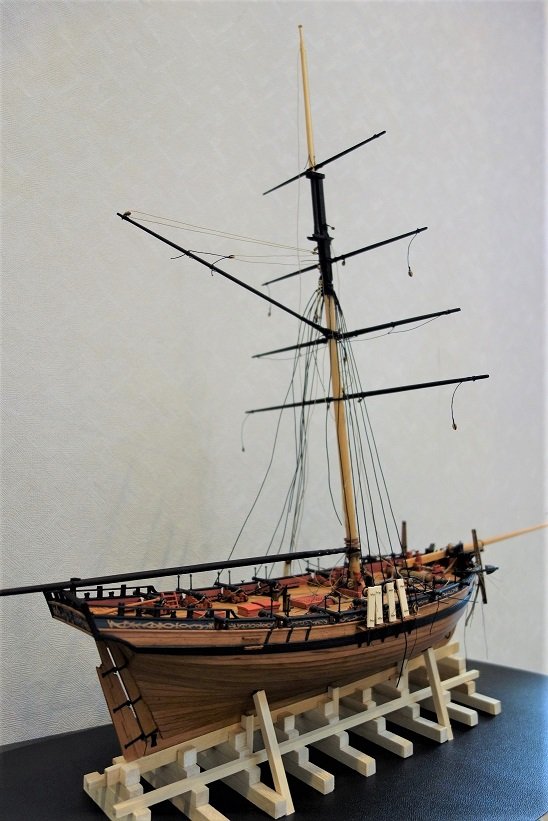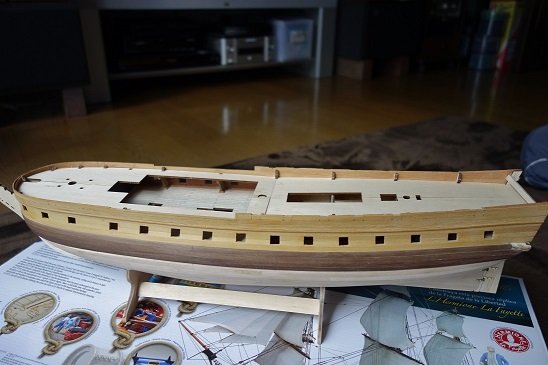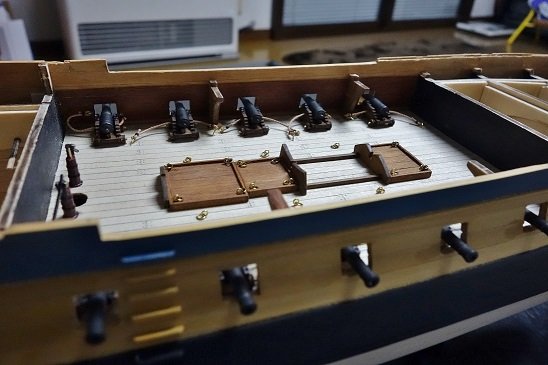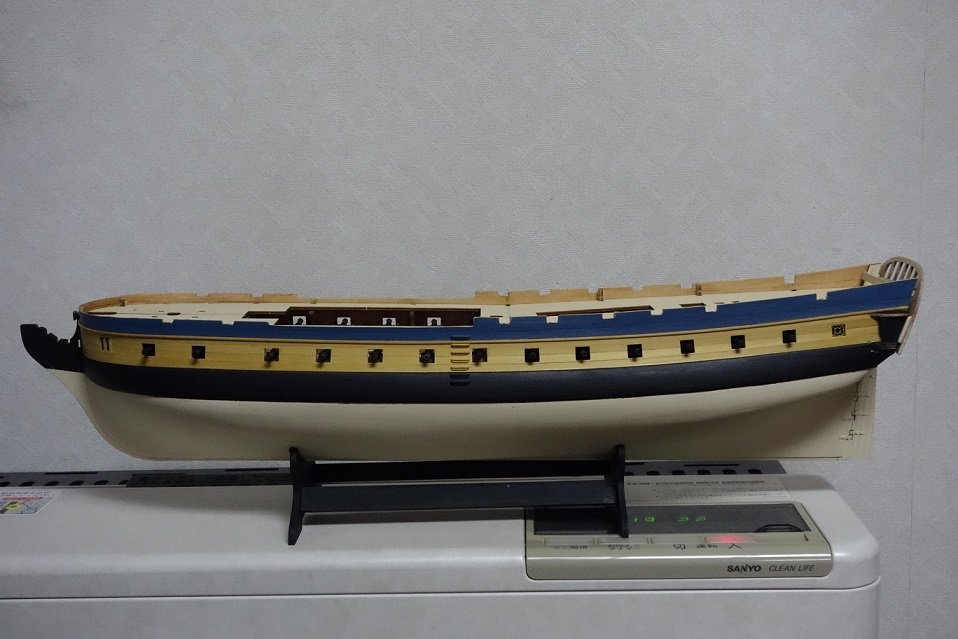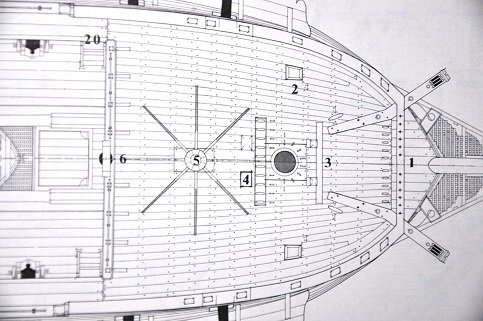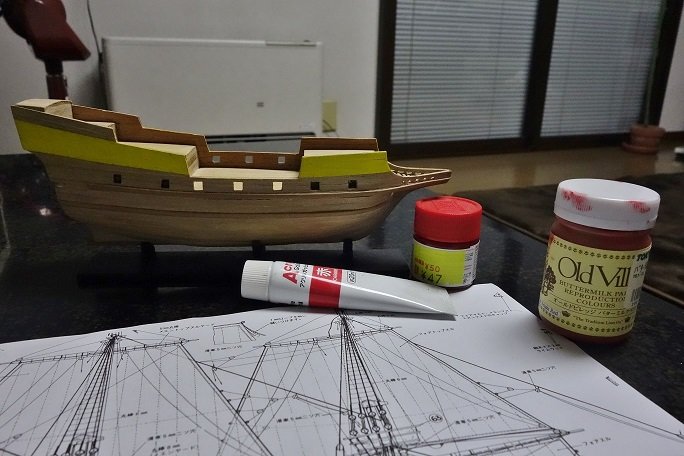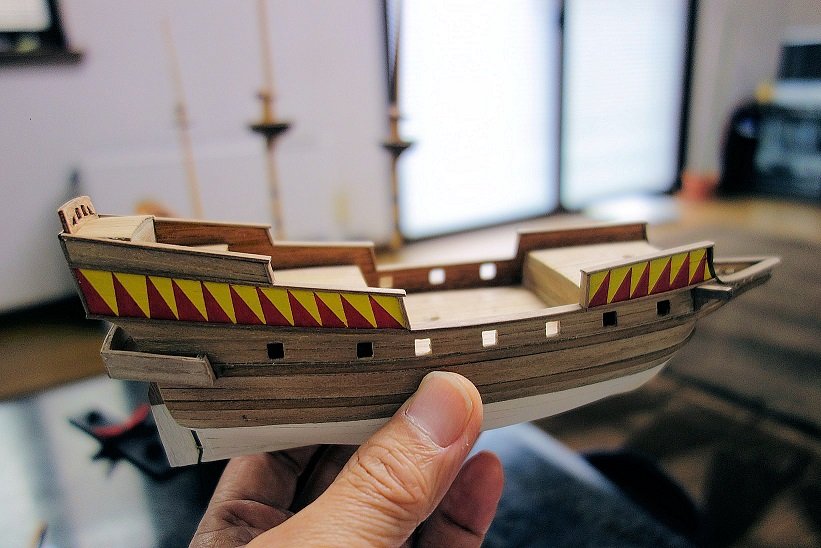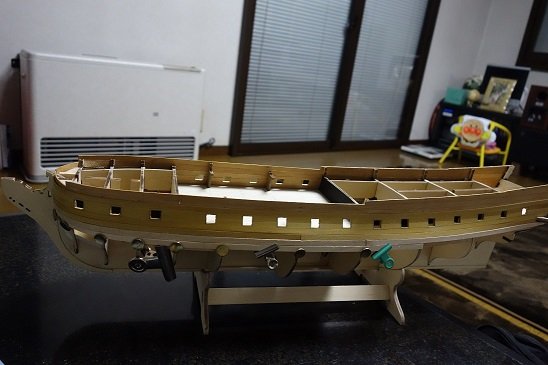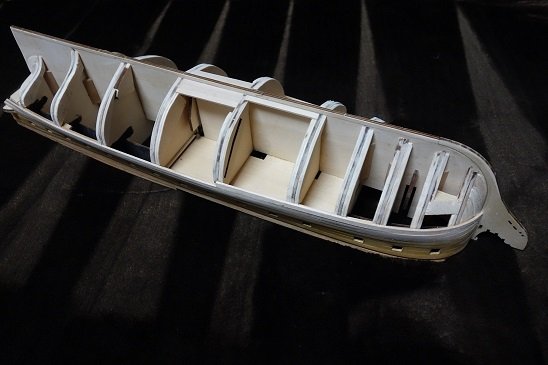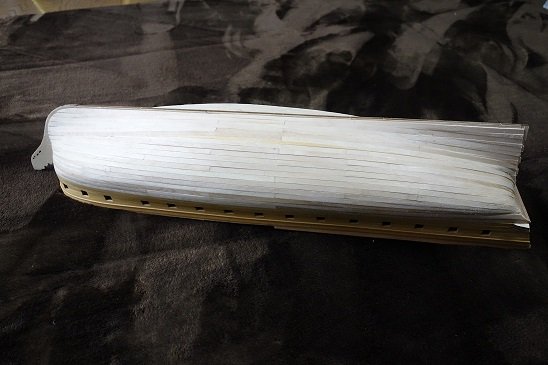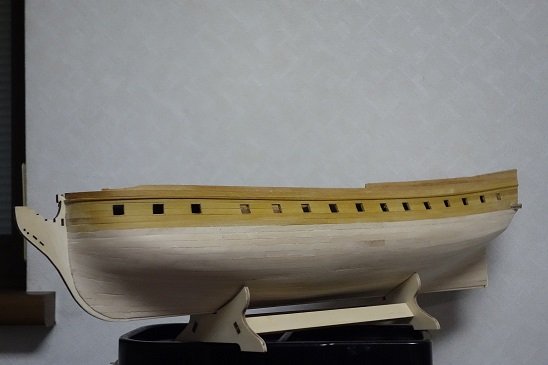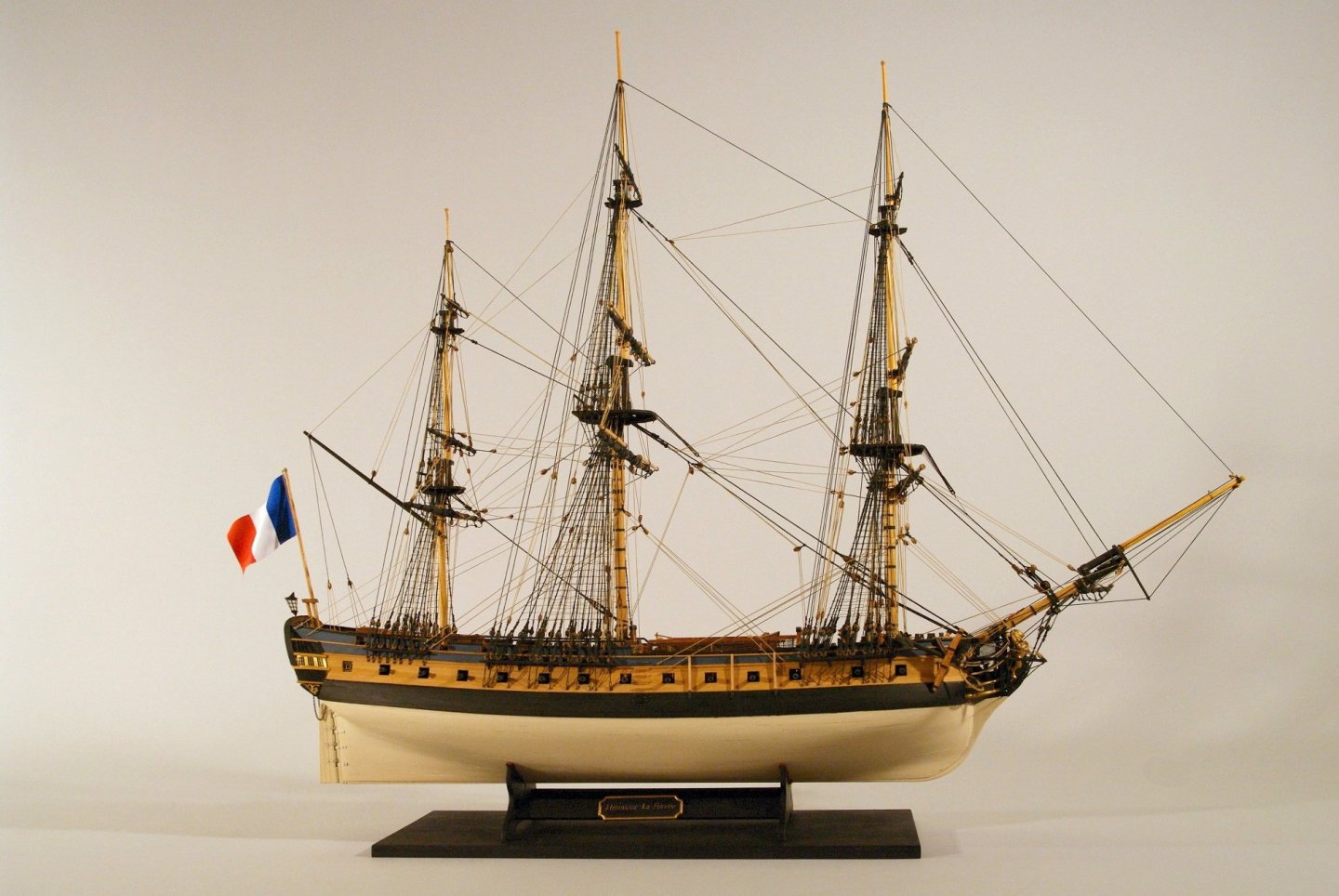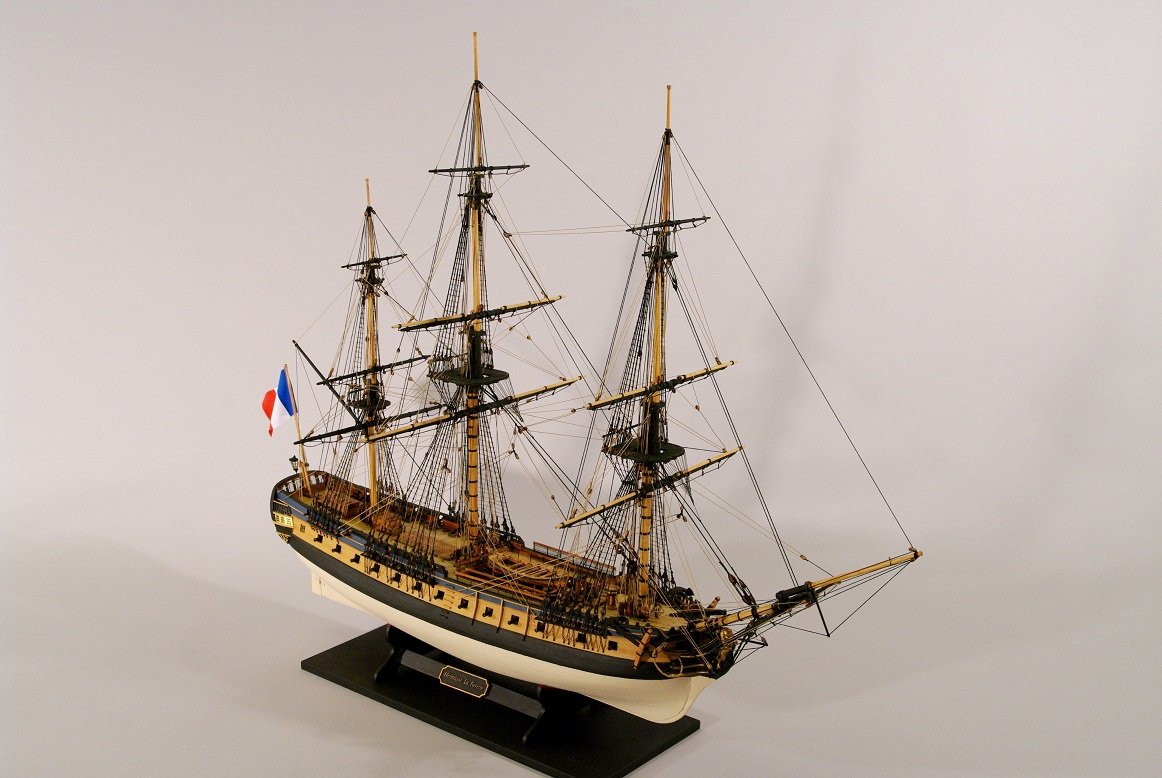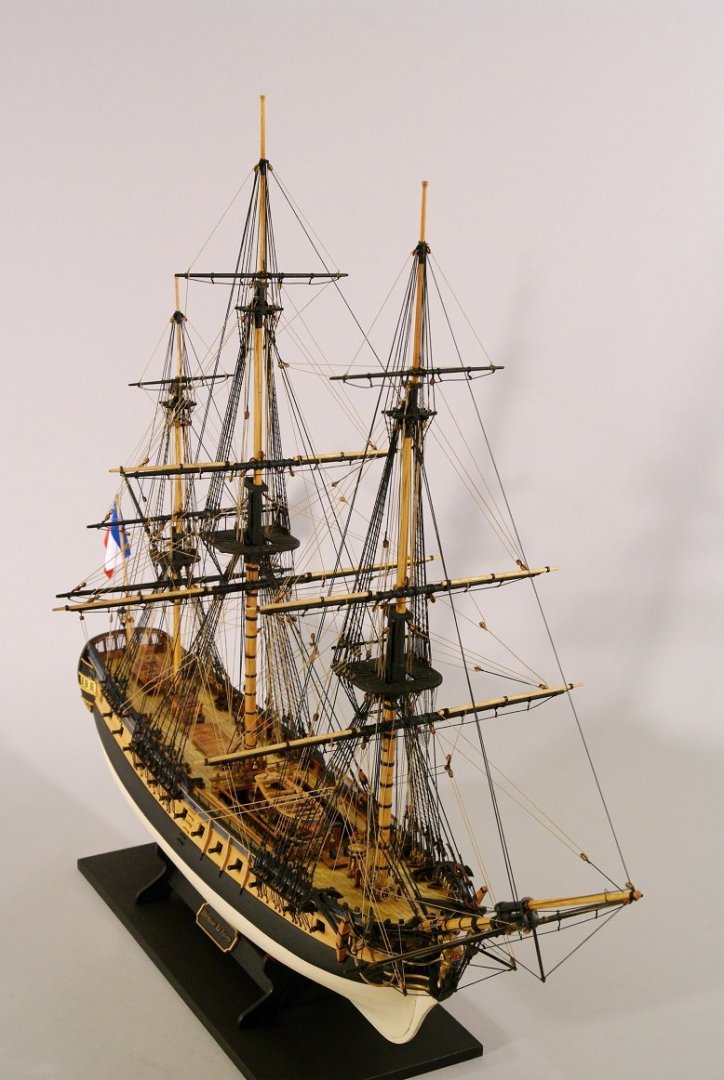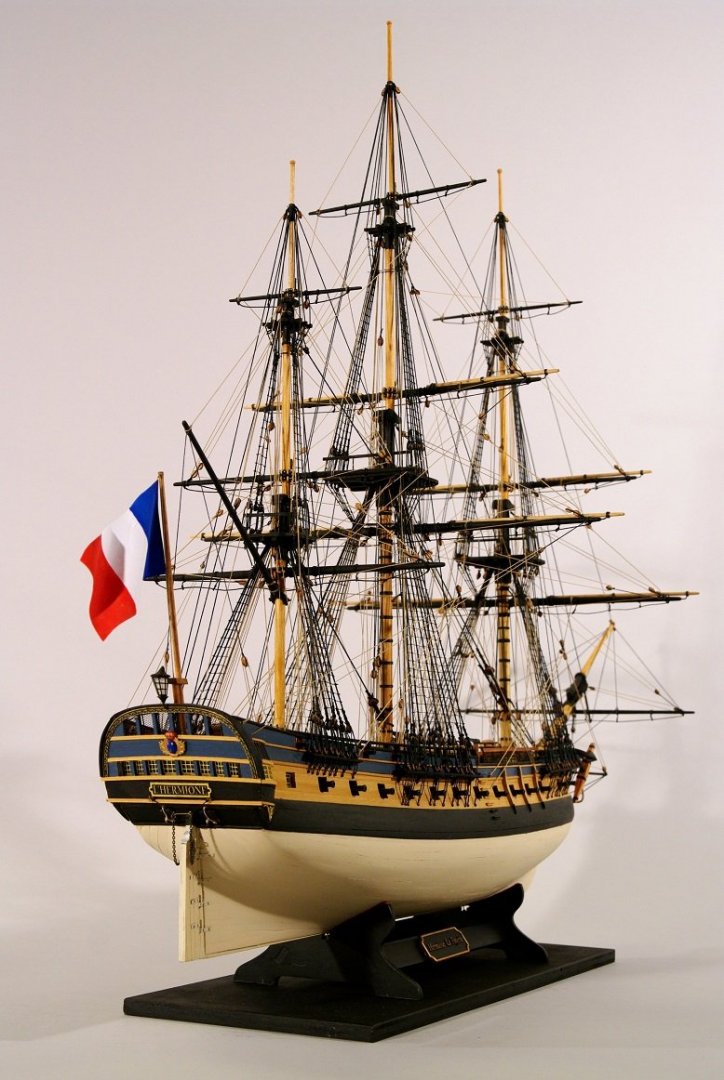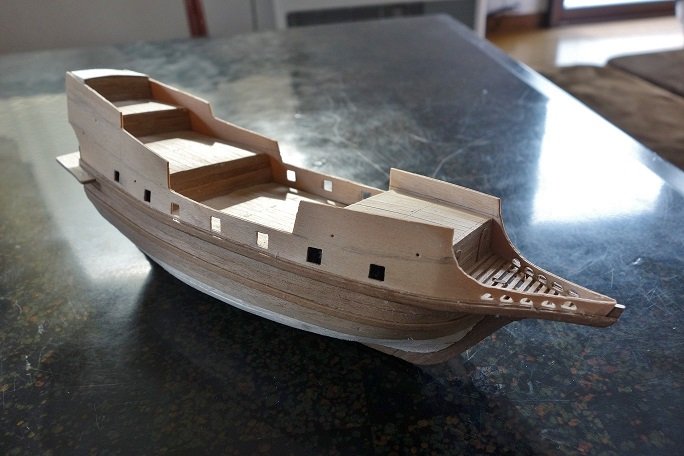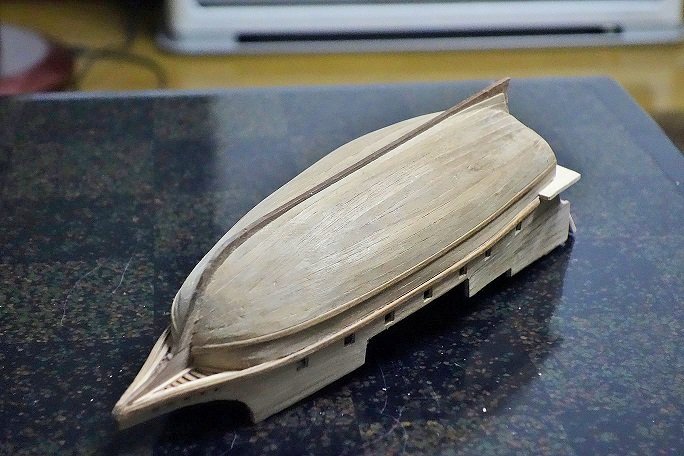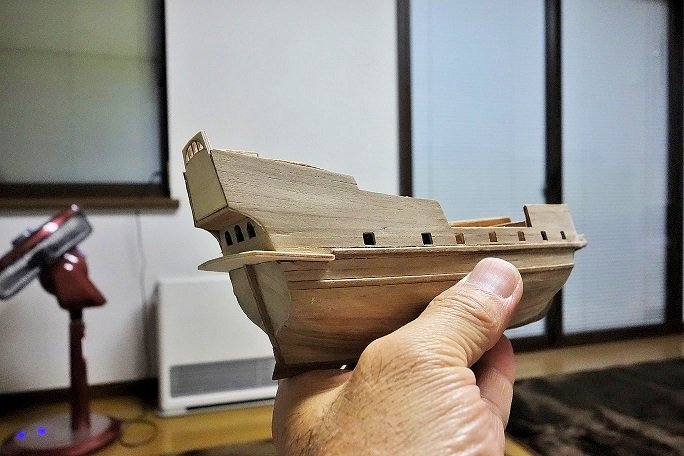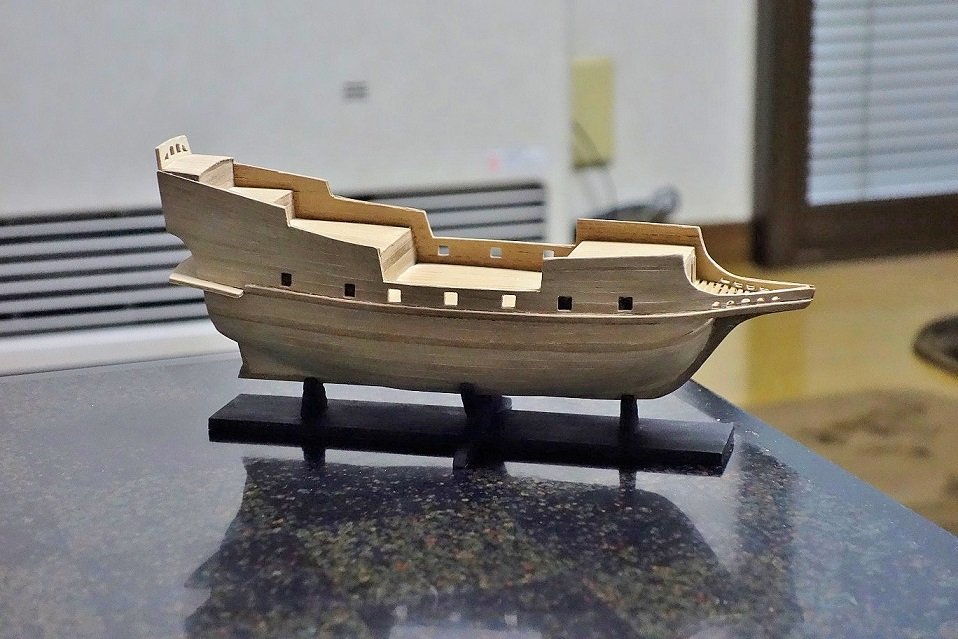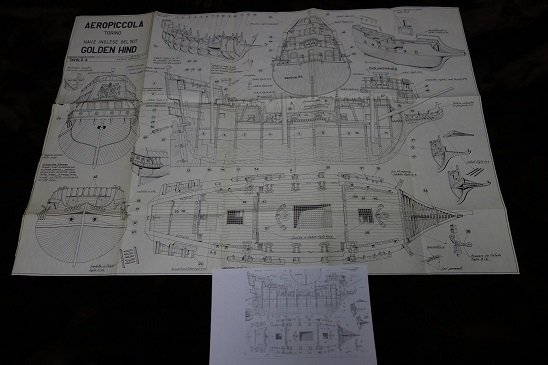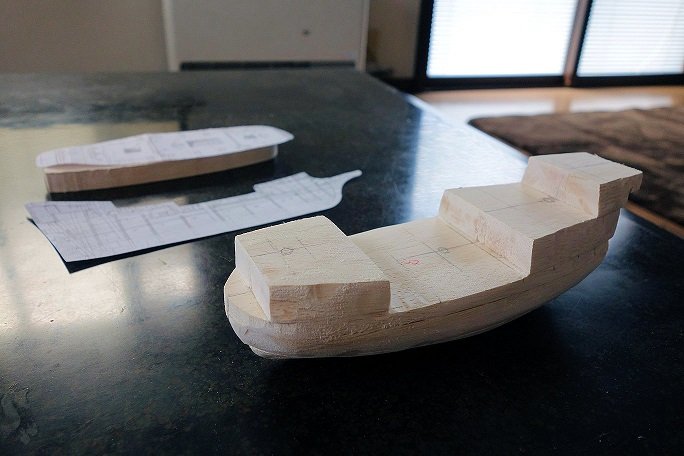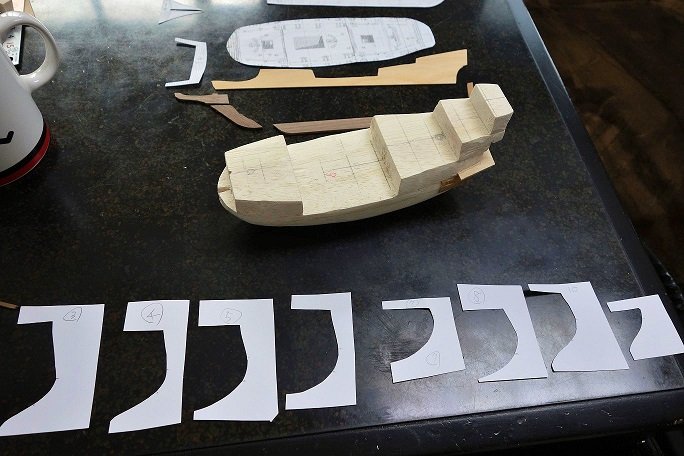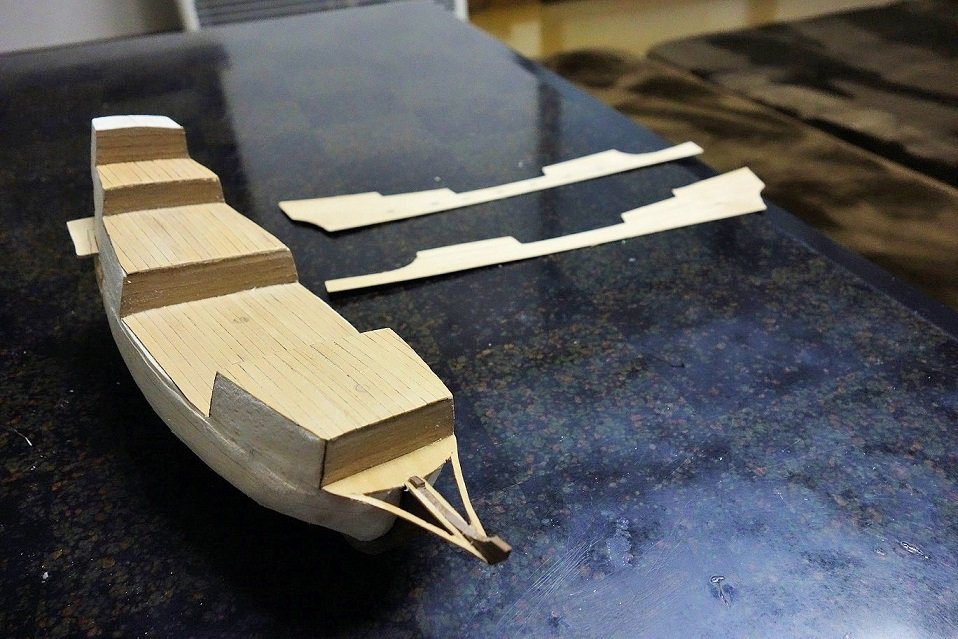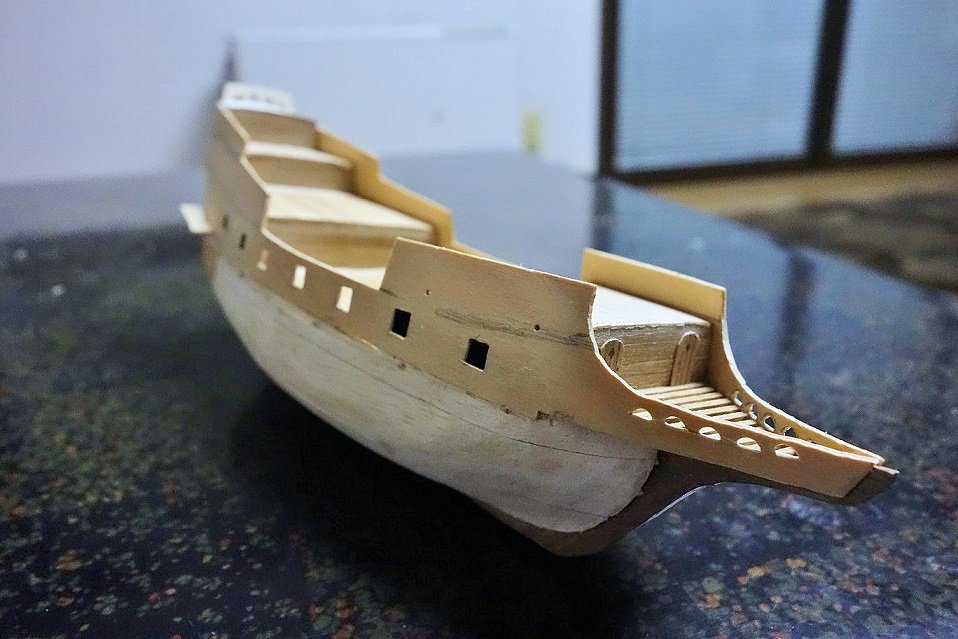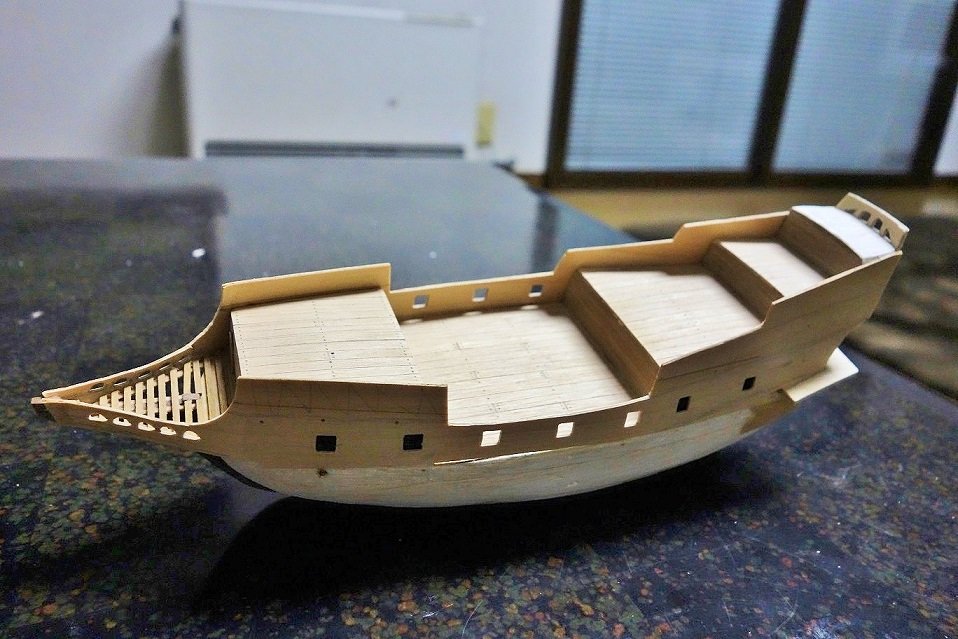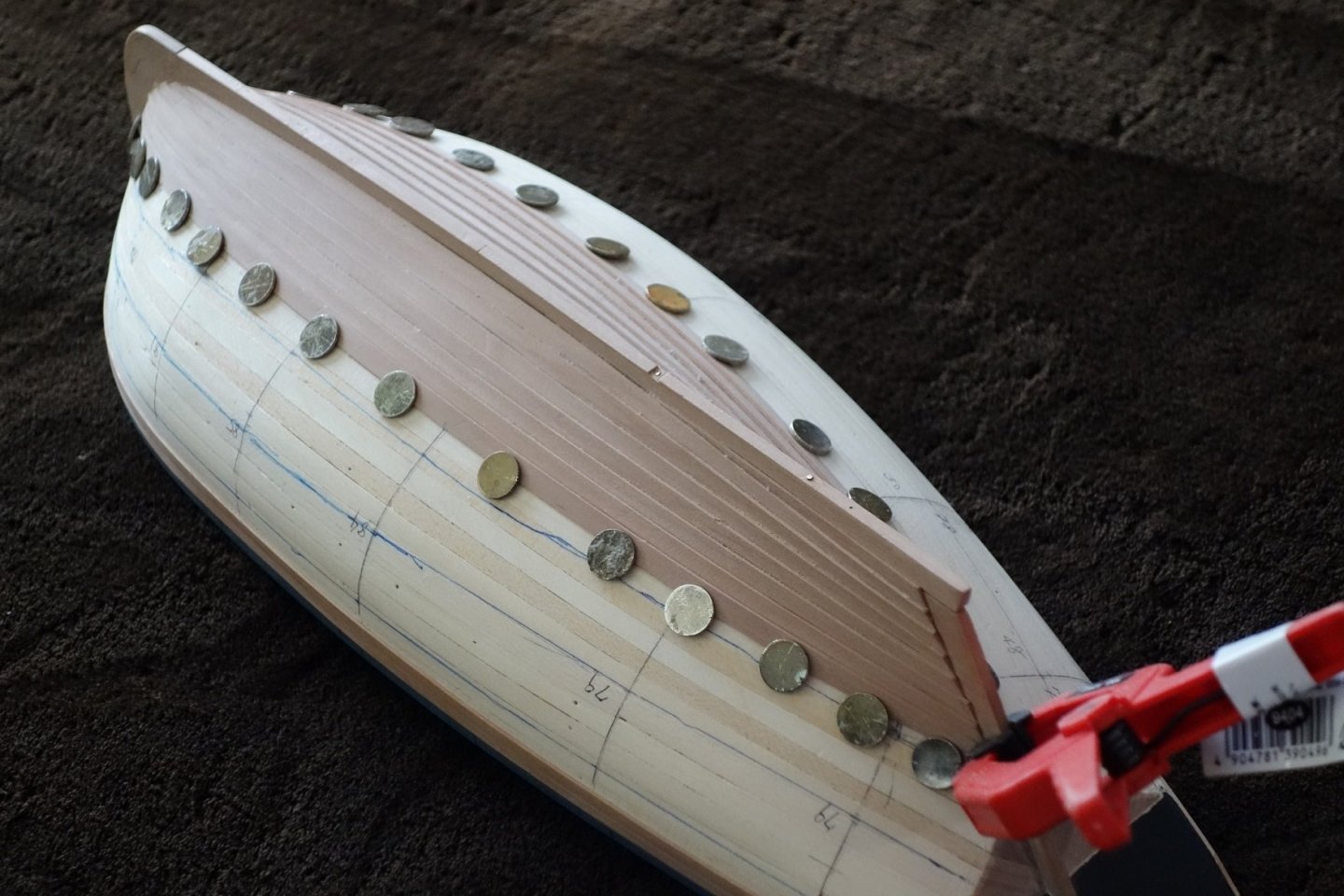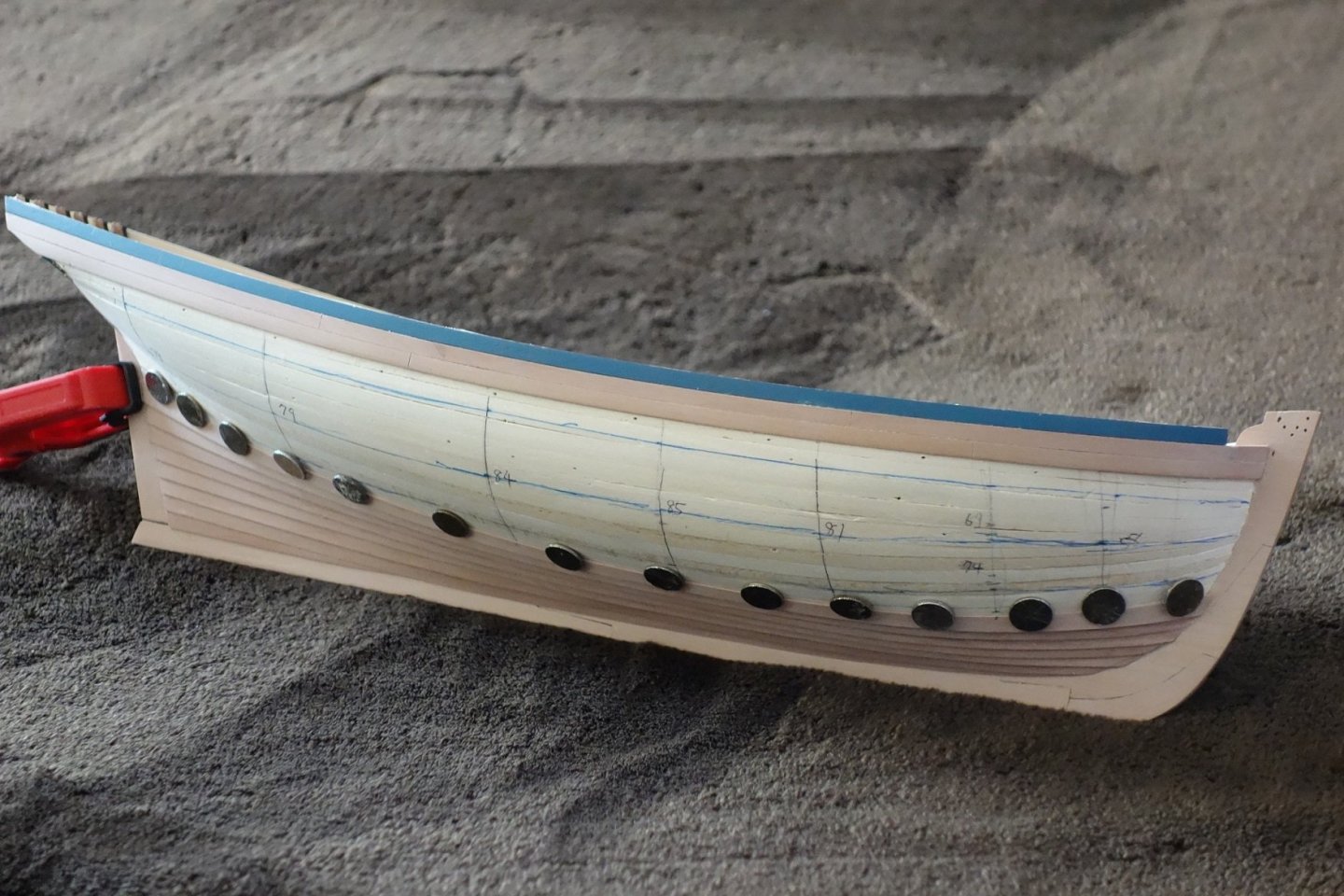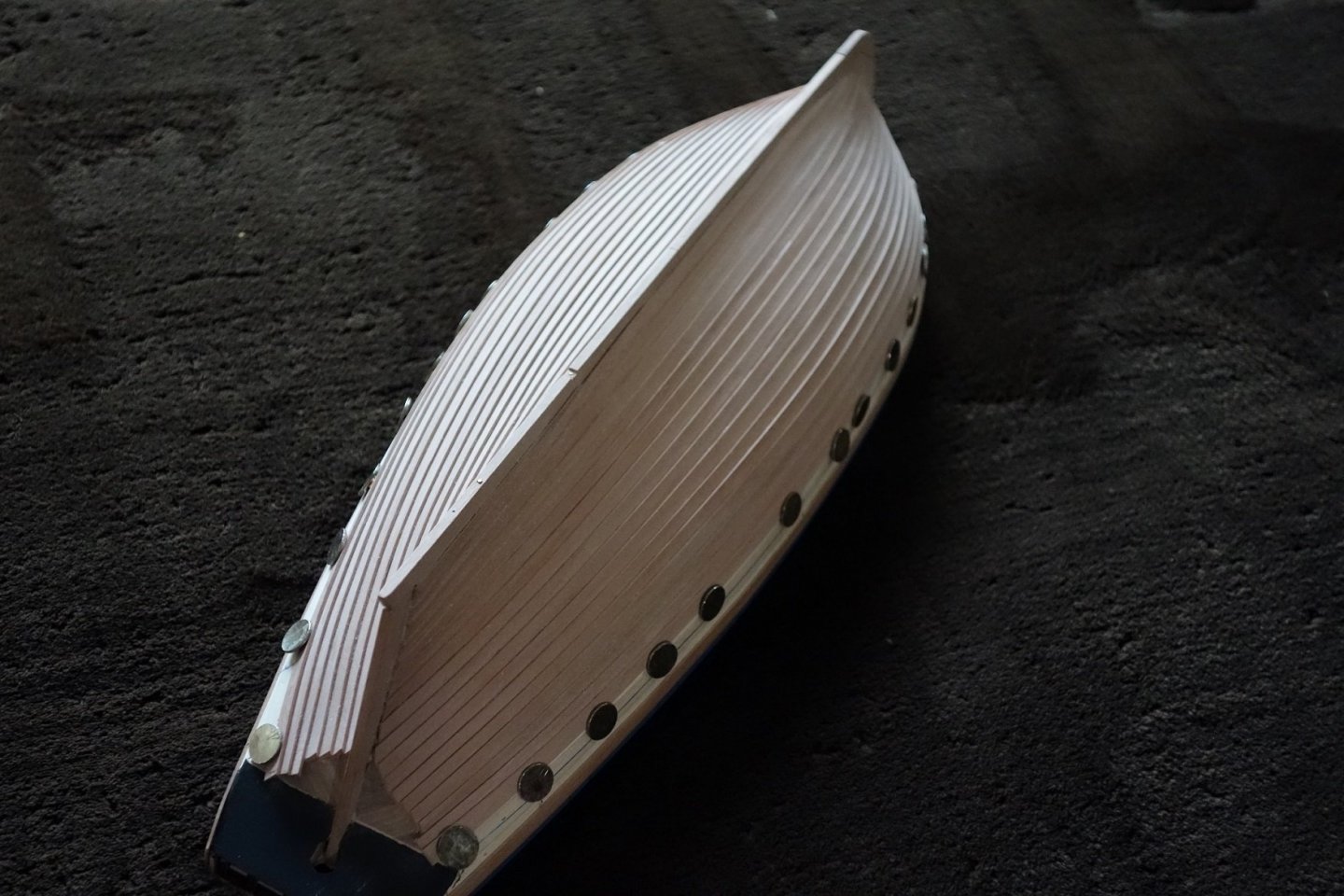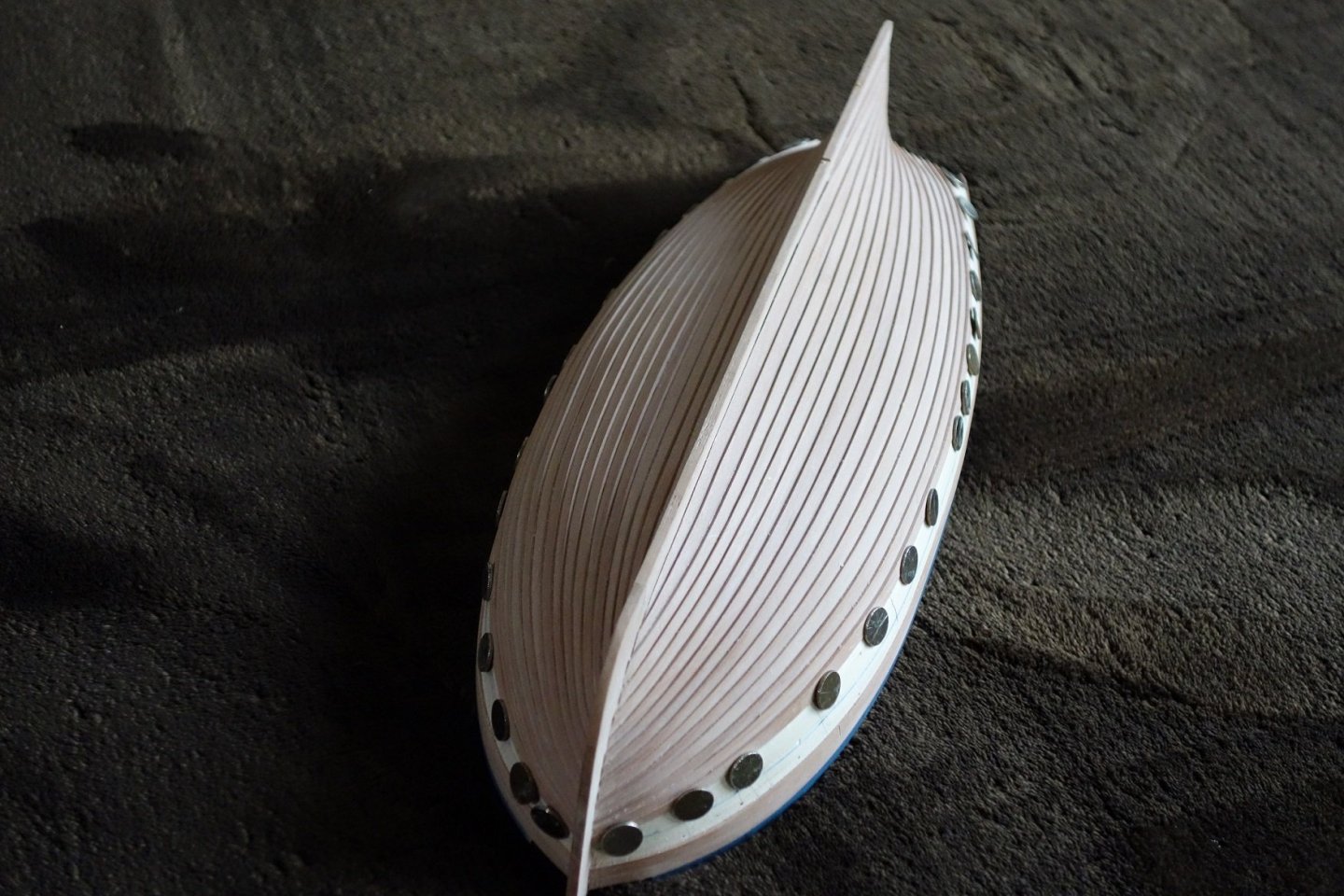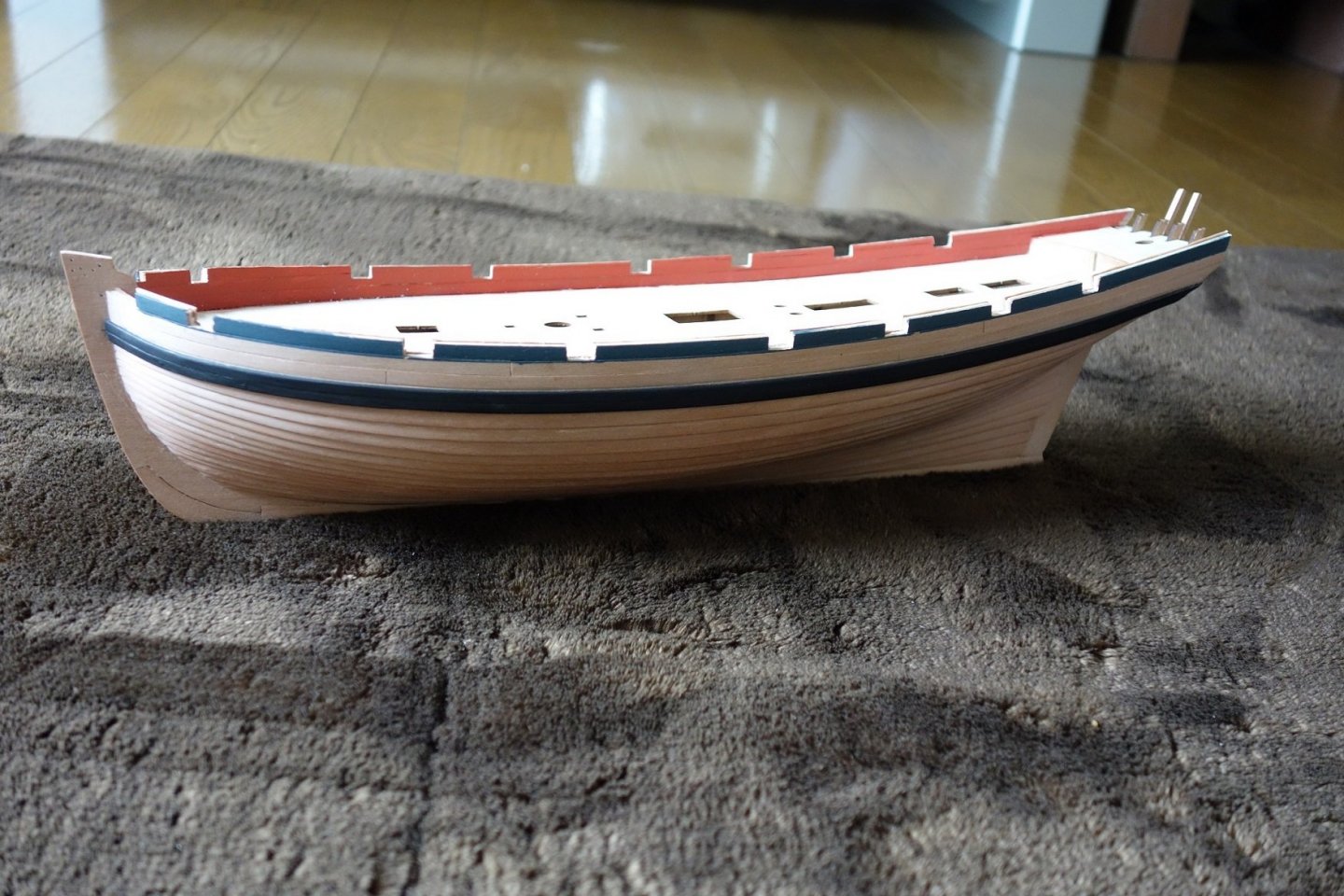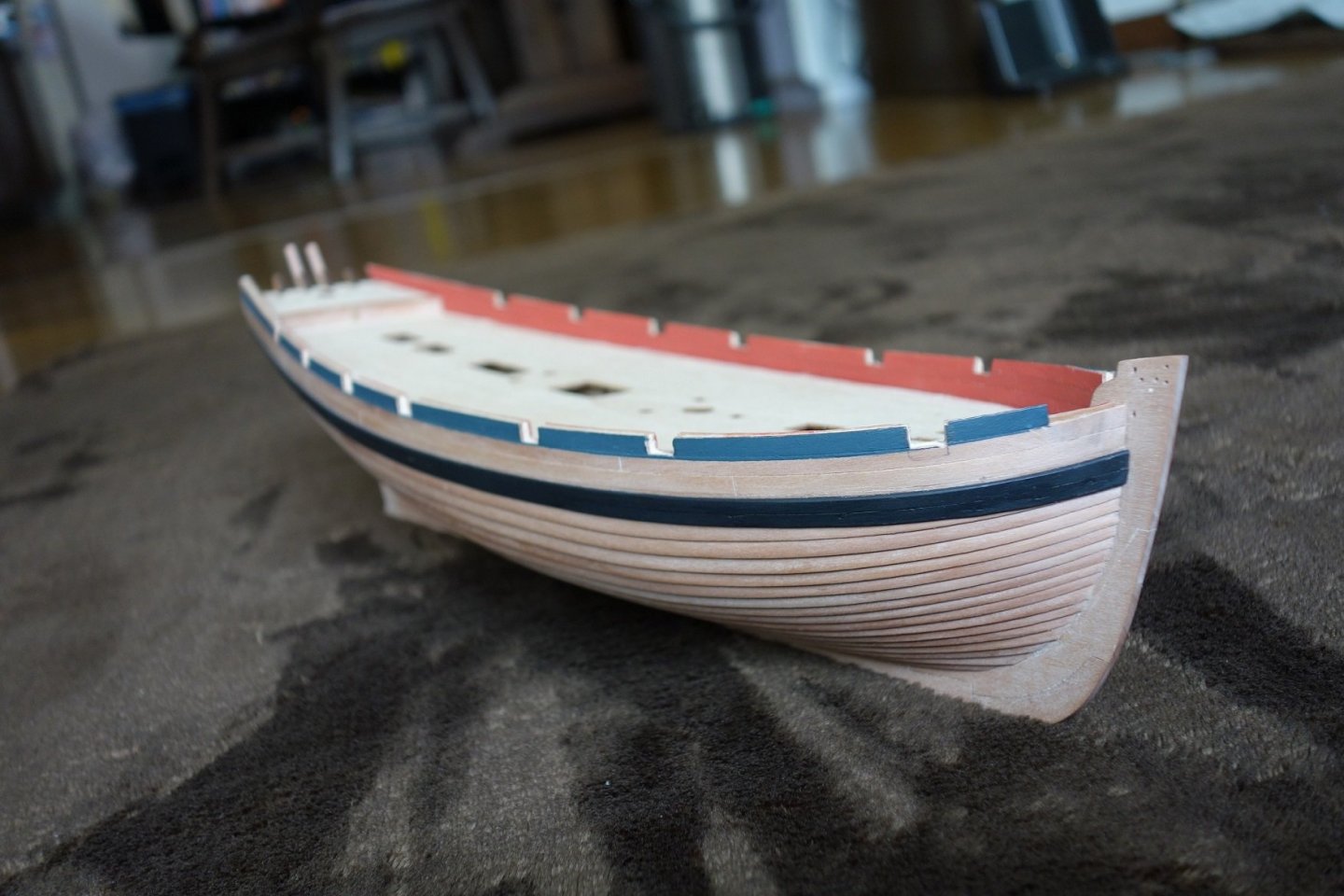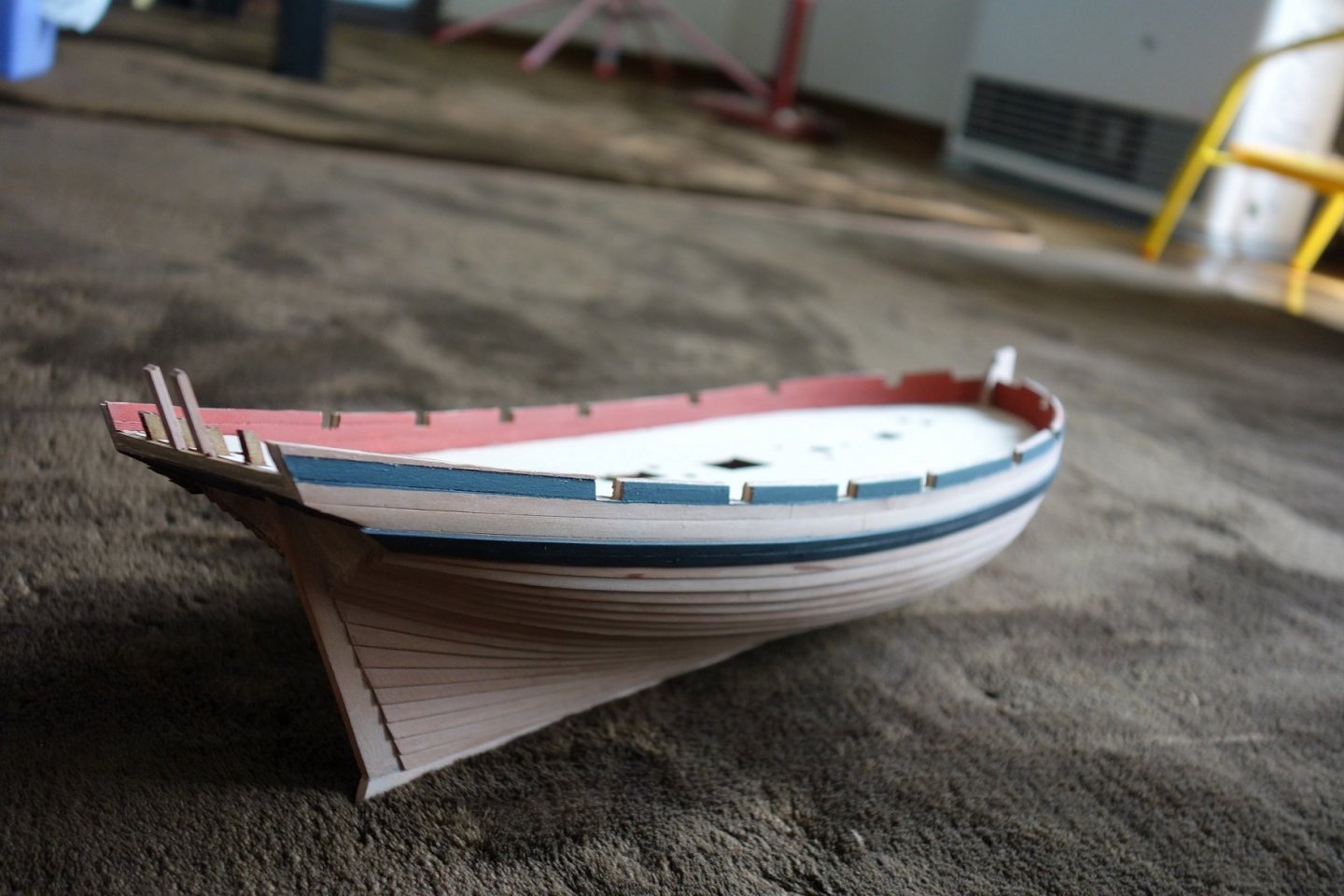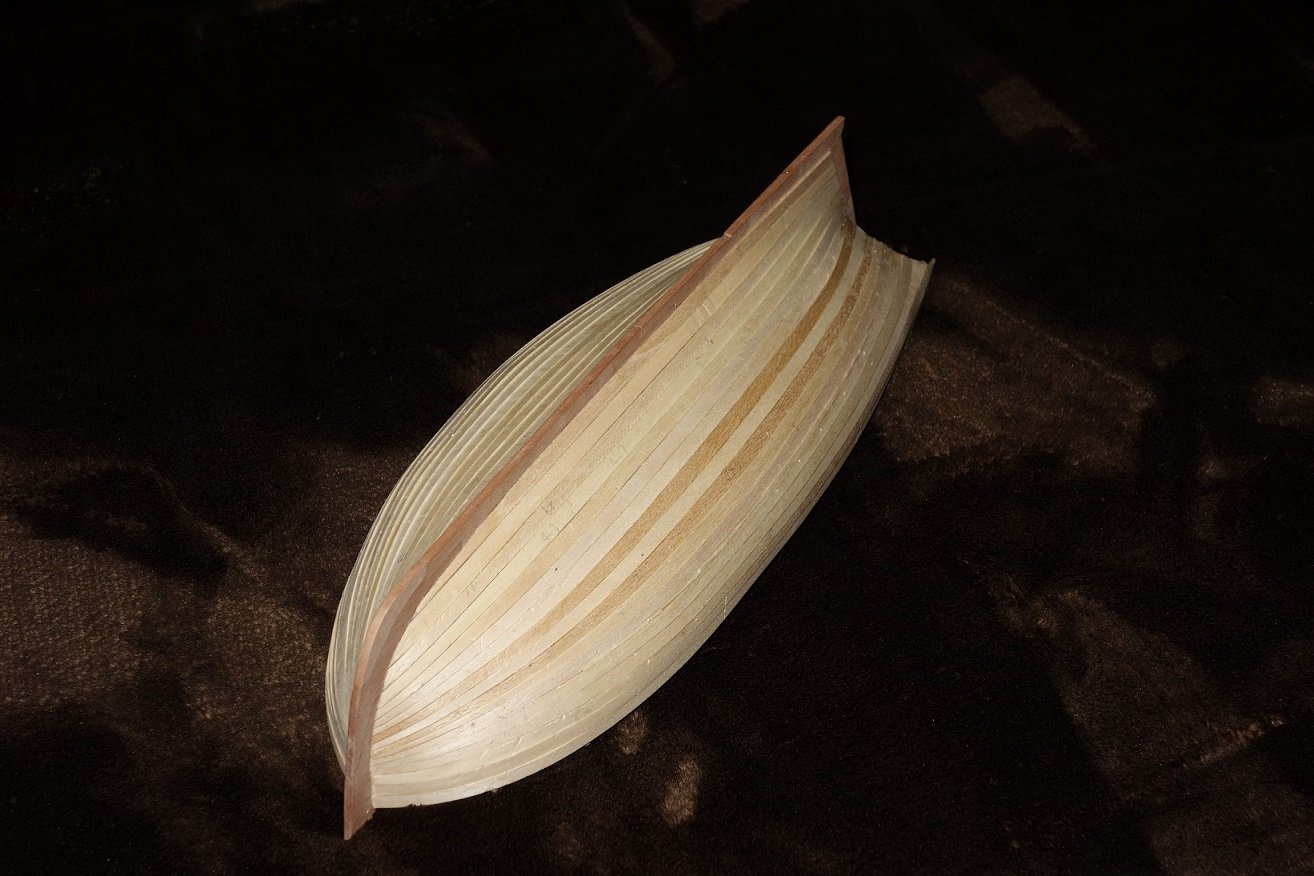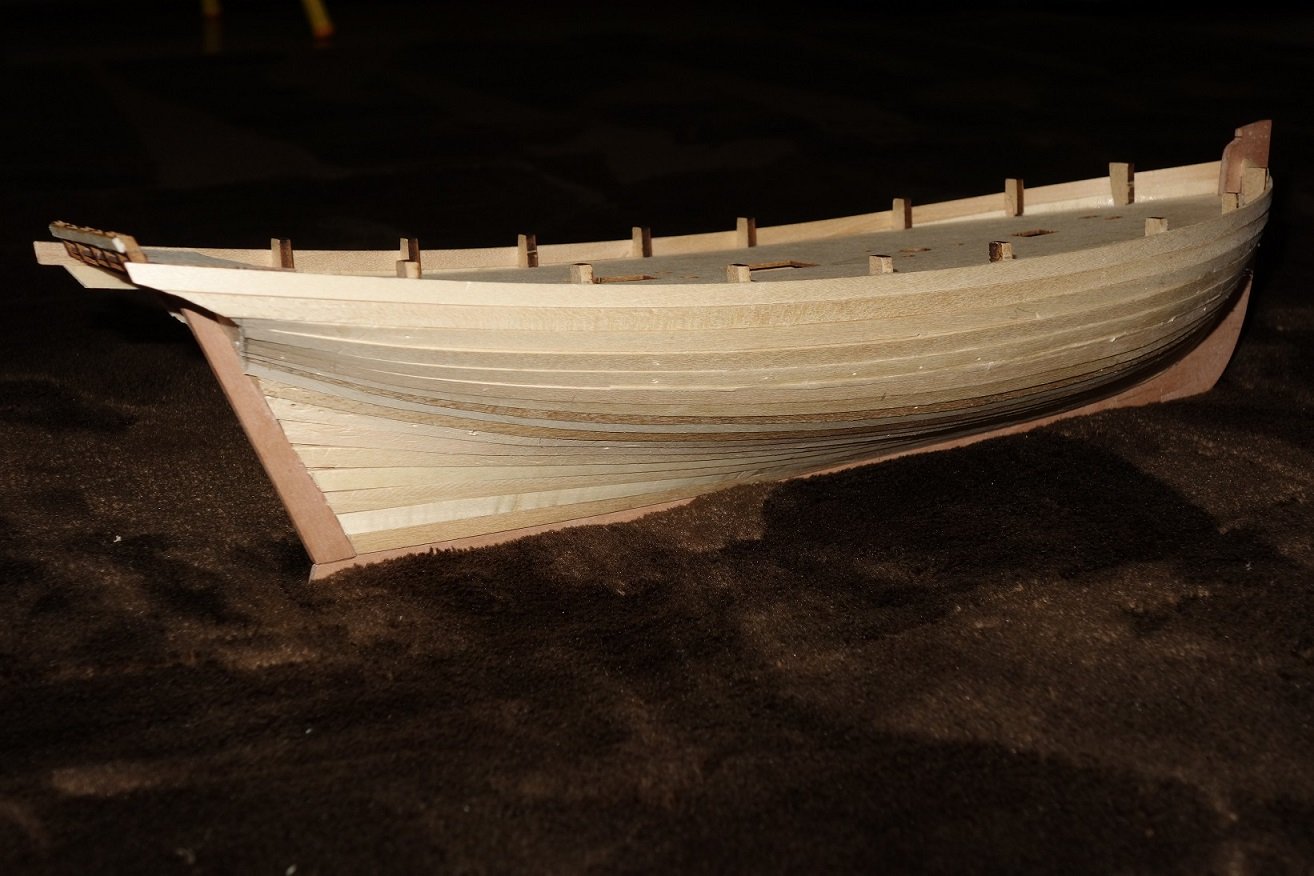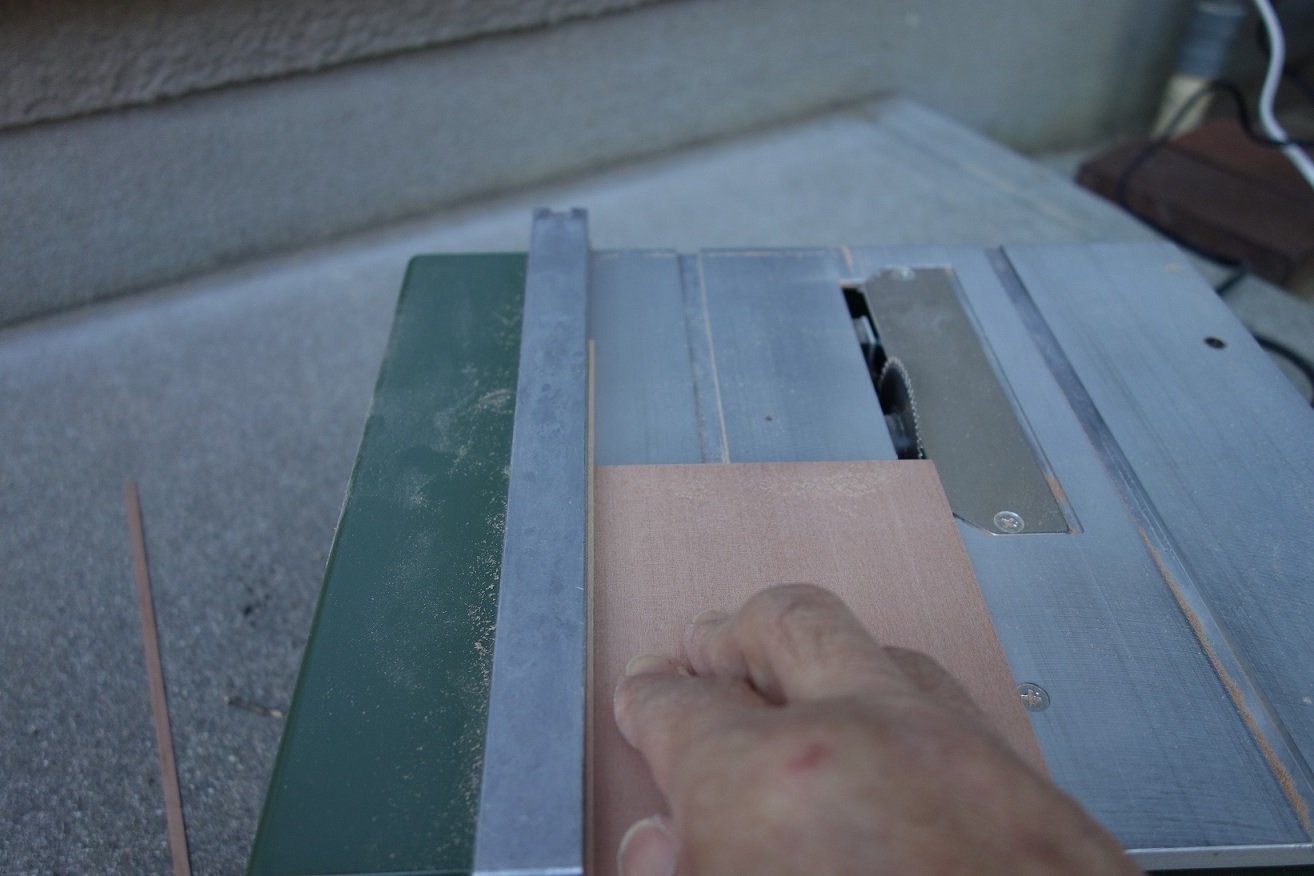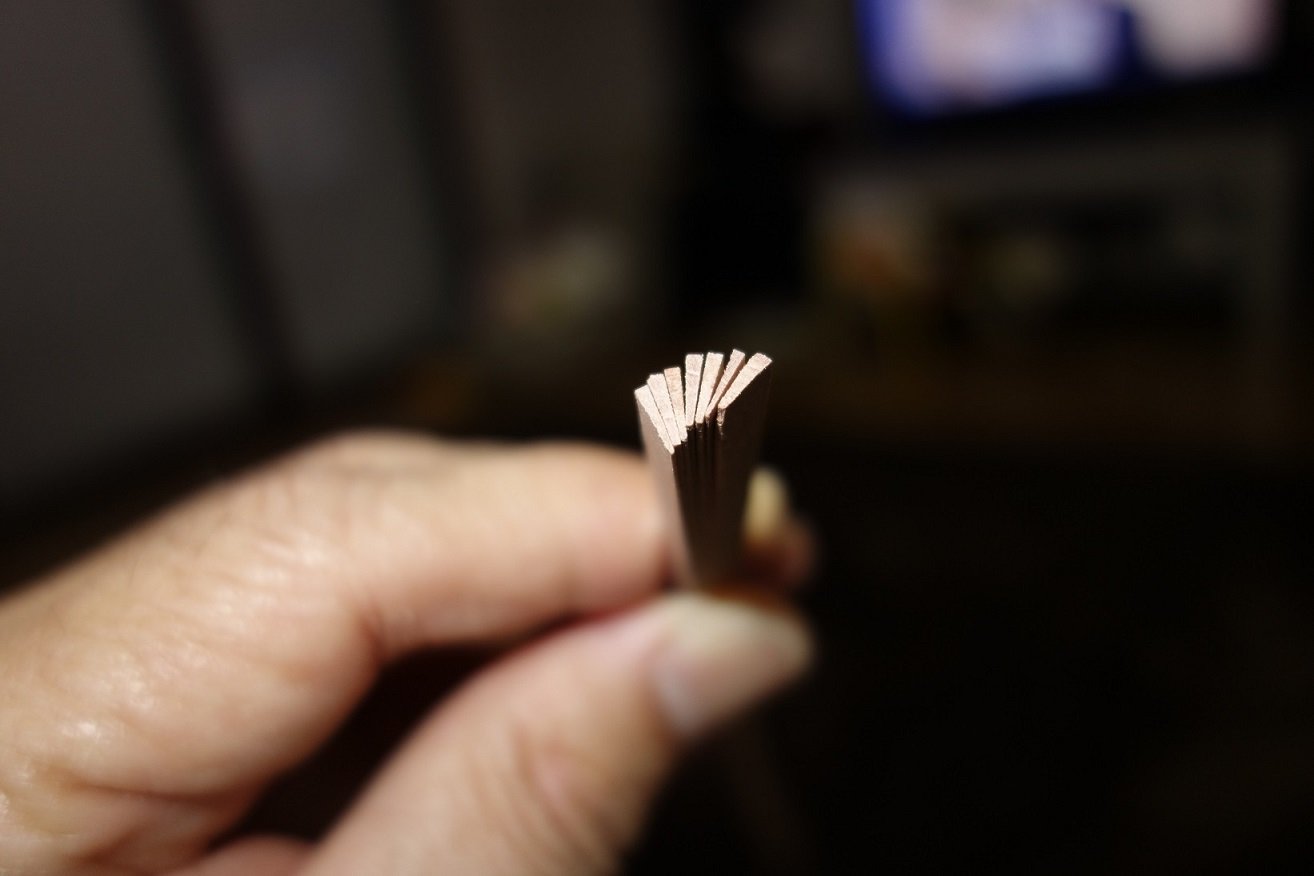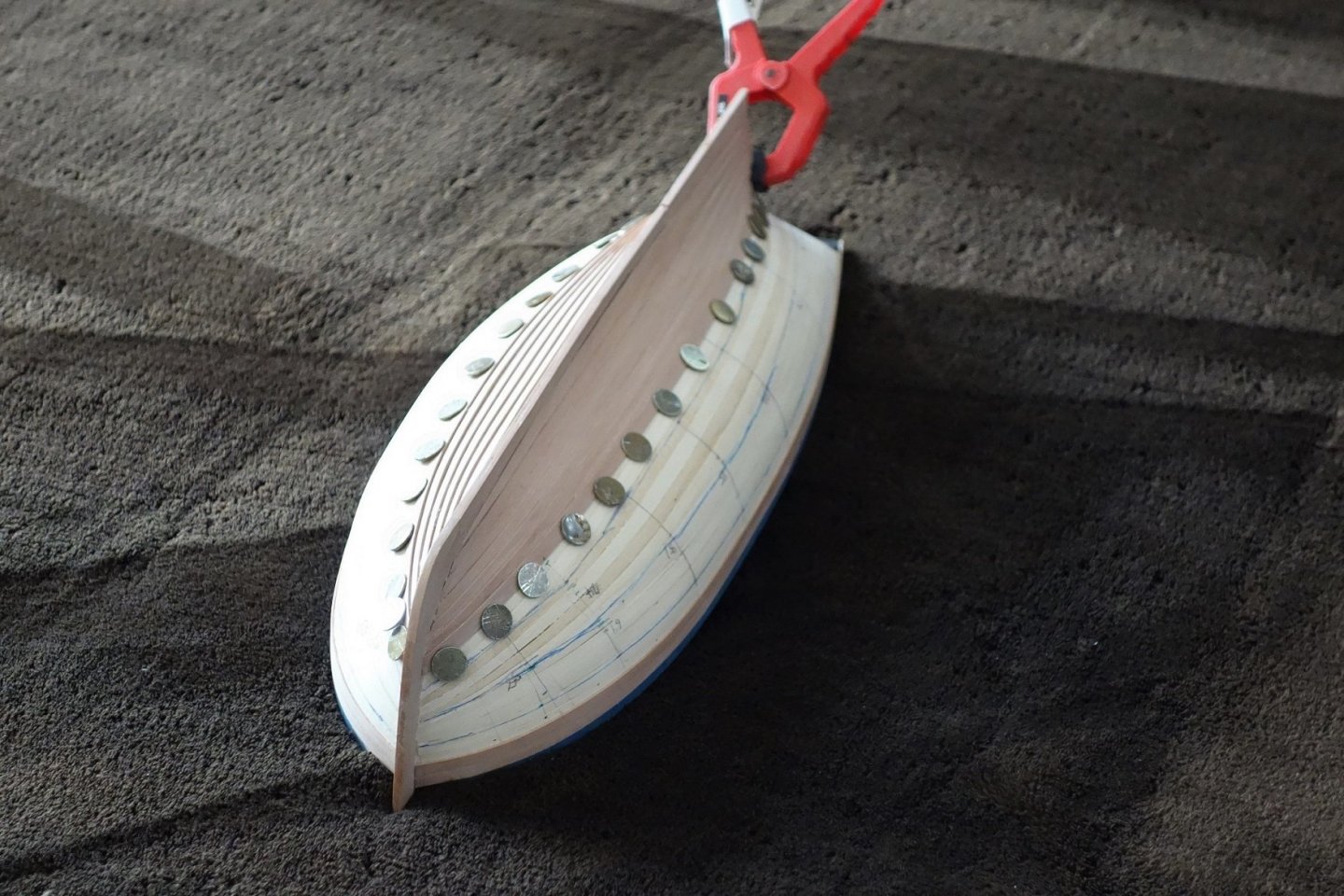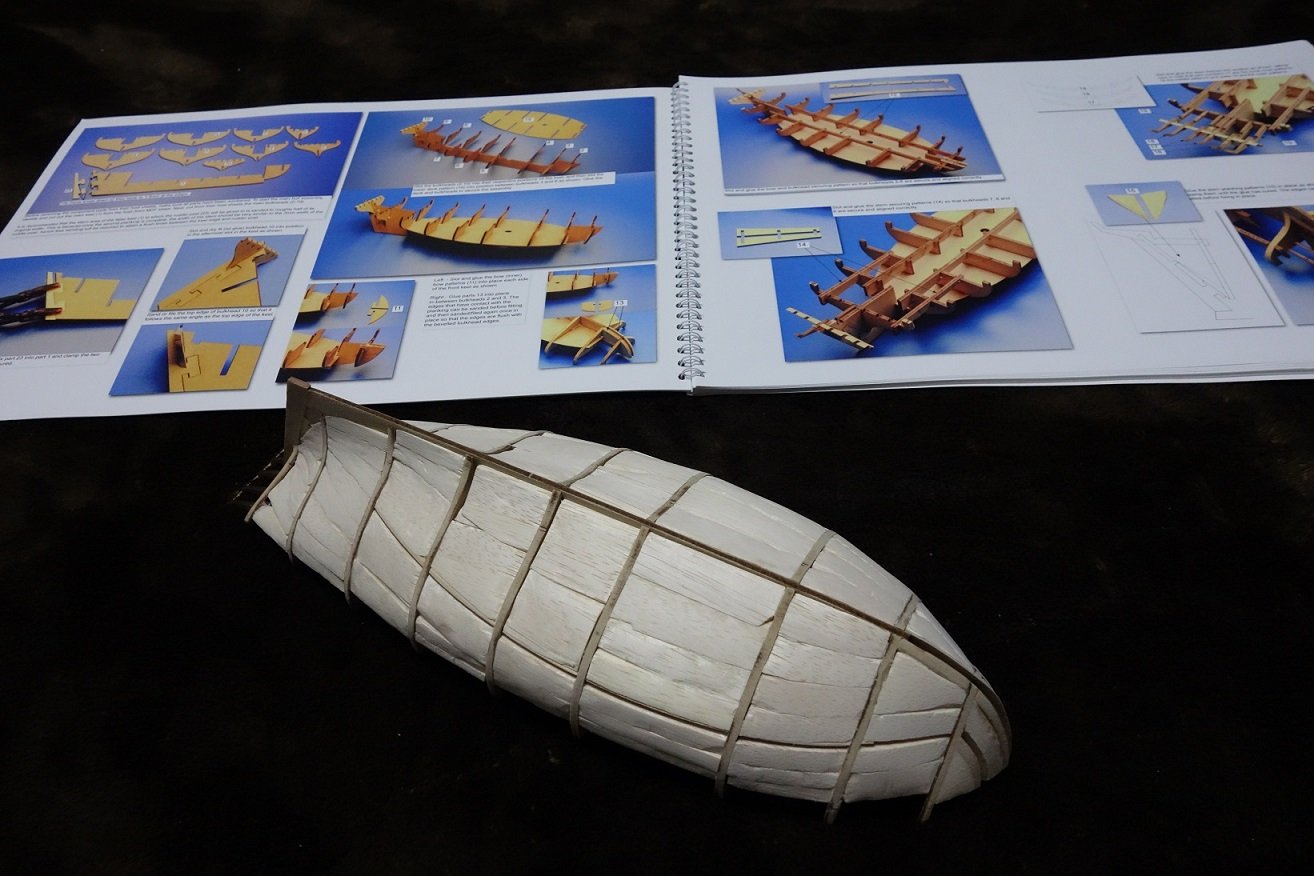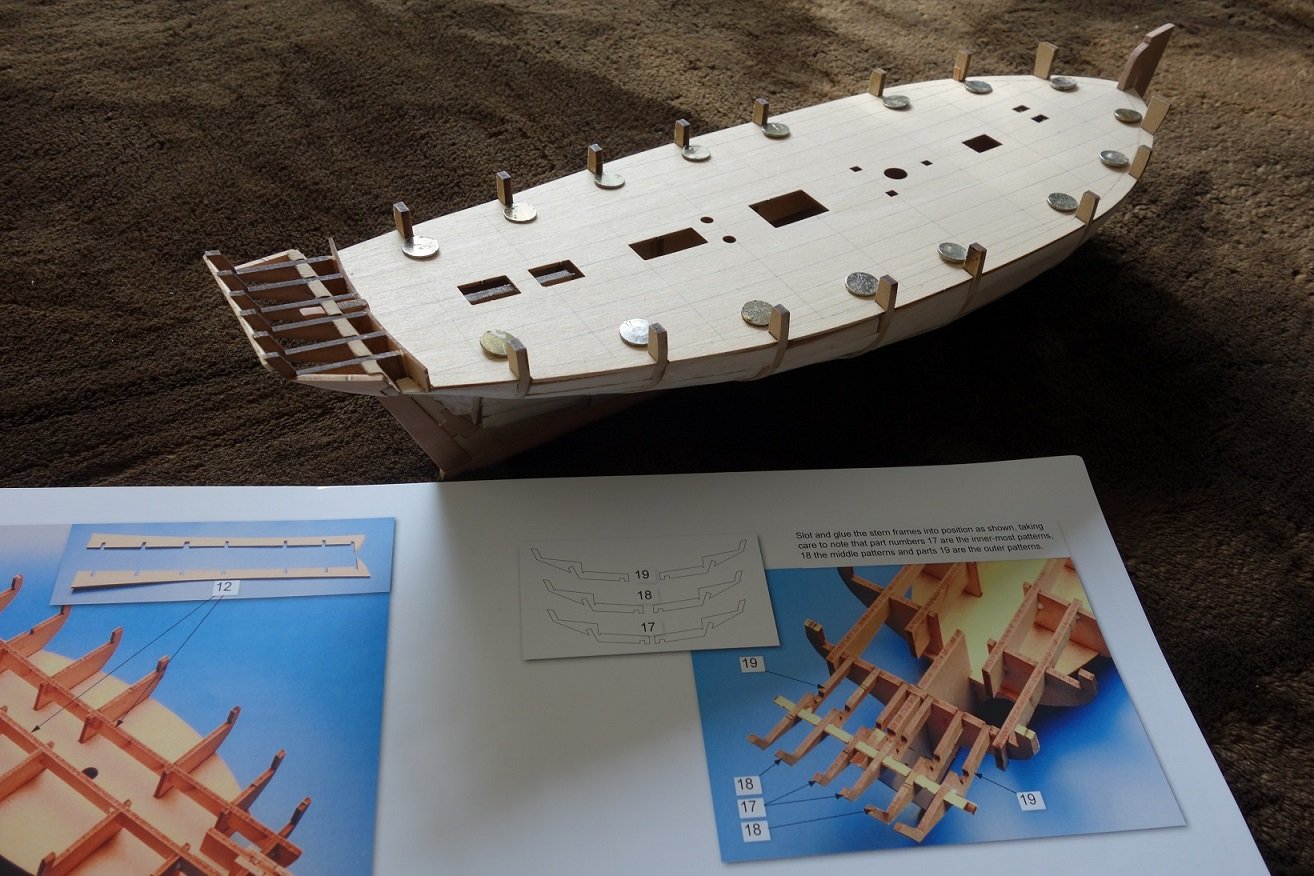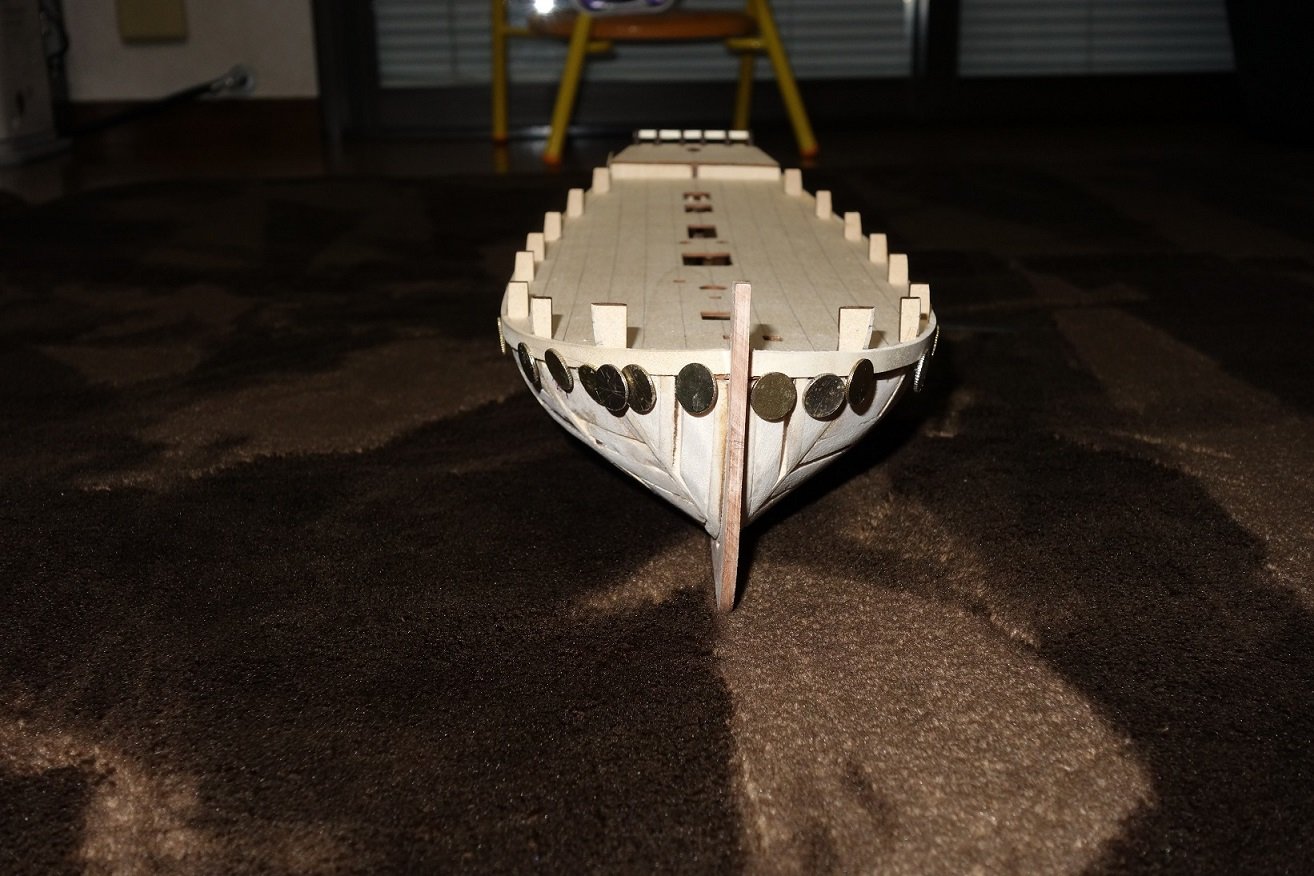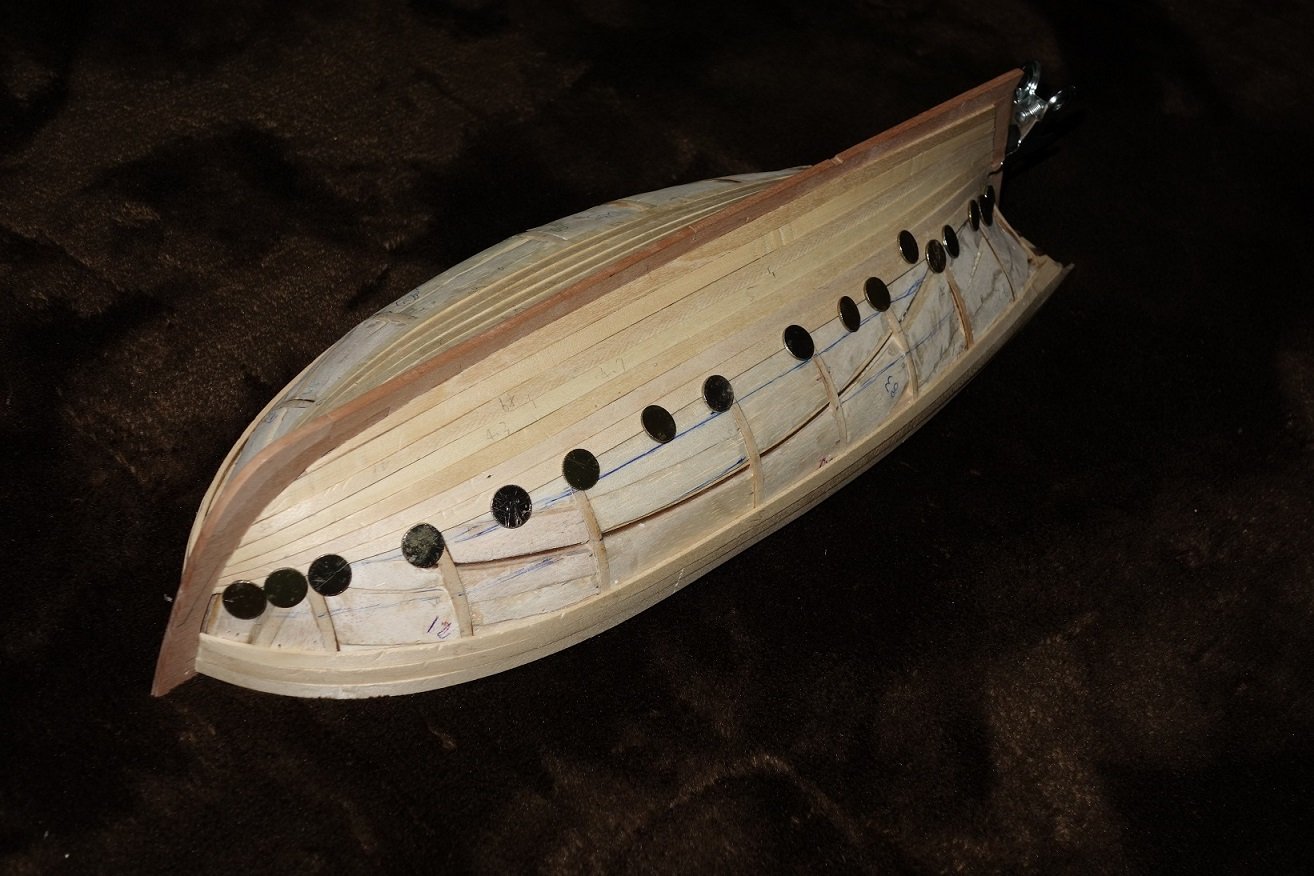-
Posts
41 -
Joined
-
Last visited
Content Type
Profiles
Forums
Gallery
Events
Everything posted by goemon
-
This is an image of the current Beagle. I also put Sapelli material on the keel part. The hinge part of the gun gate metal fittings is not reproduced. The bottom of the ship is coated with flaxseed oil, which is easier to use than varnish. The handrail has been cut from 7mm width to 5-6mm width. The diamond-shaped hollow of the part where the hammock is inserted cannot be reproduced. Since there is an exhibition, we need to complete HMS FLY by the end of June, so we may not be able to make Beagle for a while.
-
Two months ago, I started making OccCre HMS Beagle. The Beagle is a famous ship used for exploration by Darwin, who discovered the theory of evolution. The kit is a production manual only, no drawings A detailed production video from the manufacturer is available on YouTuber. The material of the kit is rough in a nutshell, but the laser cut is accurate. As for the deck, I felt that the 60mm designation was too short, so I put up a 120mm long board. The sides of the board are painted black with a 6B pencil. I cut a 23g needle and attached a stamp with a nail mark. The inside of the blue work has been changed to Sapelli. There is no camber on the deck and it is flat, but it is difficult to change, so I will make it as it is. The door was made of wood. I bent it after getting it wet, but it broke. Falcata filler has been added to the bulkhead to make it easier to fix the wood with a thumbtack. The first outer panel has been pasted. I glued the keel before sticking the second tree. For the overlay, I pasted one gun gate and then two 2x5mm boards. I painted the wales black, stuck one Sapelli underneath, and then stuck it upwards from the bottom of the ship. The sheer rail 2x2mm was a little too thick. I painted it with natural milk paint. The white paint on the gun gate has been changed so that the lower part is about 5mm above the specified position.
-
Thank you for the nice comments and the likes. And every best wish to any who are setting out to build this wonderful model!
- 23 replies
-
- vanguard models
- alert
-
(and 1 more)
Tagged with:
-
- 23 replies
-
- vanguard models
- alert
-
(and 1 more)
Tagged with:
-
Thank you everyone for your compliment. Image of handrail and rig production. I didn't know the height of the railing on the upper back deck and the size of the notch in the gun because there is no drawing and no size entry. Since the size of the grating was as large as a 2 mm grid, I changed it to a corel 1.5 mm grid. The inside of the gun port is made of mahogany, and the outfit is made of walnut. Two years ago, I didn't have the astringent red color, but if I make it now, I will paint it in the same red color as the alert I'm working on. The head rail is lightly grooved and painted. In the quarter gallery, the metal parts at the bottom did not fit, so I did not use it and made the bottom from wood. The window frame of the stern gallery was glued from the inside to make it uneven. I think it would have been better to make it as shown in the drawing and add the columns between the windows. The boat was pasted with clinker. Framed boats are well made as a kit accessory. The channel chain was remade by silver wax welding. The position was changed because the channel chain passes in front of the cannon. It is difficult because there is no design drawing.
- 7 replies
-
- hermione
- artesania latina
-
(and 1 more)
Tagged with:
-
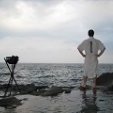
Golden Hind 1577 by goemon - 1:150
goemon replied to goemon's topic in - Build logs for subjects built 1501 - 1750
Thank you Patrick and Steven. I'm a Japanese who is not good at English, so it's been a while since I last updated. The grating is a surplus of other kits The back window frame is paper. The back window frame is paper. The door frame is paper. Belaying Pin is bamboo skewers. The handrail and belay pin are oversized. The barrel is wooden. -
My rigging is slow and time consuming, but it's almost over. I didn't like rigging, so I thought the cutter ship would end easily, but it's difficult.
- 23 replies
-
- vanguard models
- alert
-
(and 1 more)
Tagged with:
-
Thanks ErnieL and KingDavid and also thanks for the likes everyone. This is the first time the rigging a cutter ship. I attached it to the bottom of the mast by increasing the size of the small cleat in the kit. The cleat is an etched piece that is too thin to attach to the shroud rope. I dug and stuck a 1x1 tree into the kit's cleat to tie it securely to the rope. My rigging work is not completed one by one, but by adjusting the whole. The foot rope is not included in the drawing to prevent the sailors from falling from the yard, but I added it.😁
- 23 replies
-
- vanguard models
- alert
-
(and 1 more)
Tagged with:
-
Hello to all !! Thank you all for your likes and for visiting my build log. I attached a rope to the anchor. I want to express the weight of the rope... Belaying pin is coated with a highly viscous adhesive to give it roundness. Each block was dyed with a piece of paper with its corners rounded. I was not good at rigging and the production speed decreased. The main sail ring was made by immersing 1x1mm pear wood in water and forming a ring with heat.
- 23 replies
-
- vanguard models
- alert
-
(and 1 more)
Tagged with:
-
I added wale because it is flat and the tumble foam is loose. The metal parts of Lower Teakney and Lower Gallery no longer fit. In the assembly manual, the upper hull will be added after trimming. It is easier to make it all at once. The bottom of the ship was painted by mixing white and sail color at a ratio of 50%. Since attaching the upper deck makes it difficult to manufacture, complete all outfitting before attaching. The French ship noticed that the deck was curved according to the hull, but the plate attached to the kit could not reproduce the curve.
- 7 replies
-
- hermione
- artesania latina
-
(and 1 more)
Tagged with:
-

Golden Hind 1577 by goemon - 1:150
goemon replied to goemon's topic in - Build logs for subjects built 1501 - 1750
I painted it with a brush. In my case, paints with low hiding power, such as white and yellow, are painted with an airbrush, but since the range of painting is small, it is best to paint with a brush. -
This kit took 9 months to complete. I think the production time for one day was 3-4 hours. The hull was built in 3 months, and the mast and rigging took 9 months. Box wood is used for the upper part of the hull. The lower part of the hull uses wood from the kit. The thickness of the bulkhead was as thin as 3mm, so I couldn't continue to make the bottom from here. I cut and glued the remaining veneer board of the kit to the bulkhead . At this time, I knew only balsa wood as the filler. I didn't like balsa because the thumbtack doesn't work to planking. Currently I use Absolute Falcata for the filler.
- 7 replies
-
- hermione
- artesania latina
-
(and 1 more)
Tagged with:
-
Hello all, This kit was made two years ago. First, the image I love French freegate ships such as La Flore and La Renome beautifully. This kit is modified according to my taste. I think there are some mistakes. I will also write a record of the production.
- 7 replies
-
- hermione
- artesania latina
-
(and 1 more)
Tagged with:
-
Hello to everybody! I don't have anything other than the instruction manual for the alert material, so I will refer to the works of Blue Ensign and Dubz. Thanks! After all, I remade iron hoop to secure bow sprit. The brass material was used by removing the etching parts of the kit and cutting the remaining frame part. It is a silver brazing using the easiest brazing wax. Bowsprit alignment is also my loose tolerance. 😉 And I dyed it lightly with cherry blossom dye. The stock of the anchor was remade. The bottom part of stove flue is made of wood, and it is made of Kent paper. Should I rebuild the mast ring or omit it? Cut a thin piece of wood, roll it up, glue it in, and cut it into slices... It's tough, so let's omit it!
- 23 replies
-
- vanguard models
- alert
-
(and 1 more)
Tagged with:
-

Golden Hind 1577 by goemon - 1:150
goemon replied to goemon's topic in - Build logs for subjects built 1501 - 1750
Thanks Steven. ・Planking 0.5x3mm walnut is lined on the hull. Since the hull is small, I could attach it immediately. The walnut board is so thin that it can't be sanded much. I made a boat stand. -
I make a reduced version of 1/150 size the Golden Hind from Aeropicola, which I bought 40 years ago. I have reduced the size of the drawing to 1/3 size. Since it is a small size, it will be a solid model base. I made cross-sections at intervals of 13 mm from the drawing of the bulkhead. ( I only have 13mm of material ) It was cut out with a saw and adhered according to the cross section. The pattern was made from cardboard from the bulkhead drawing, and the sides of the hull were trimmed accordingly. The keel was made of 2mm thick walnut and the upper side plate was made of 0.8mm thick plywood. Make a 2mm keel groove on the bottom of the ship. I glued 0.5x2mm Tanganyika wood to the deck. 0.8mm plywood deck glued to the bow and stern, and keel glued to the bottom. The side plate was glued and the hull part was trimmed by 1 mm so that it was flush. The gun gate was opened in the upper side plate, and the hull part was carved a little and painted black. I glued a 0.5x3mm walnut to the cabin wallboard. The size of the hull is 20 cm.
-
Thank you captain hook. Finished the pump The metal fittings that fix the bowsprit to the keel are thin, but I'm planning on just winding the ring due to the mounting position and alignment. It is the alignment of the bow split, but it is swinging to the starboard direction, maybe because the bit was remade. Kit part of the bit was a soft white wood with a thickness of 3 mm, it is remade to a thickness of 4 mm I am going to adjust the position of the bit by moving it by 1-2 mm. Fix the cannon to the deck, add pins to the pedestal. I am not worried about the barrel that has been unpopular with presbyopia these days, so leave it as it is.
- 23 replies
-
- vanguard models
- alert
-
(and 1 more)
Tagged with:
-
I will introduce the current production status image. Outfitting parts have not yet been glued to the hull. This is because the grating has not been made accurately. Some of the outfitting parts are remade. Windlass was painted well and remade from wood.It was quite difficult to sharpen an octagon with a slope. I used the barreled barrel as it was. I changed the handle of the rudder. The nail hole is stamped by cutting a 23G injection needle. The channel chain was a little long, so I cut it short. I also tried rebuilding the deck.
- 23 replies
-
- vanguard models
- alert
-
(and 1 more)
Tagged with:
-
Thanks all, It is a continuous image to the present I tried to glue the transom and give it a little curve, but it is almost straight.It seems to break easily with 1mm limewood and needs some reinforcement. I painted the side frieze decoration with gradation and pasted it. The deck is changed to Tanganyika wood without using the Boxwood of the kit, and Boxwood is used for other ships. I cut out the margin plank. Linseed oil was applied instead of painting. Clinker pasted, pear wood finished with linseed oil is the main reason I wanted to make this kit. Linseed oil was also applied to the finished deck. When I put a waterway on it, I feel that the margin plank was a little narrow. It is an image of Pear Wood with linseed applied twice. The stern transom is made by stacking and reinforcing wood. Since the parts of the kit for the sail boom cradle on the side are thin, I made it again.
- 23 replies
-
- vanguard models
- alert
-
(and 1 more)
Tagged with:
-
It is an image of 2 weeks from the start of production. I will paste it and I will adjust it in the wale part at the end. For the vertical adjustment of plankinng, refer to the line that divides the vertical distance into four and adjust the amount of overlapping trees. Adjusting the vertical direction gradually adjusts the overlapping amount and the clinker paste will be neatly arranged. I don't know if pear wood is a material that is easy to stick to or thanks to a triangular strip, but clinker sticking is easier and easier to stick than underlay. The top image and this image differed by one day, and we were able to proceed at a considerable speed.Because of the corona The need for adjustment in the wale part was almost eliminated and it was possible to manufacture it accurately. There is almost no need for tapering of plank, and when the overlapping part becomes thick at the ship's part, the deck side is tapering. A grain of wood appeared in a conspicuous place near the wale part. I didn't notice that it was a pear wood that had almost no grain.
- 23 replies
-
- vanguard models
- alert
-
(and 1 more)
Tagged with:
-
Fast planking is completed within a week from the start of production. I think that it was possible to make it a little easier by cutting the convex part of the ladder post and attaching the ladder post after finishing the planking like the 2nd edition. I've made a small cutter for shipboard with clinker pasting, but the "ALERT" size thing is the first clinker pasting. So I cut out a triangular strip It is a pear material with a maximum thickness of 1 mm x 5. Adhesive area is larger than square strip, and the tolerance of overlapping trees can be increased. Stick 5 mm wide wood from the bottom of the ship so that 1 mm overlaps in the center. By drawing a line in the stern direction as shown in the image below, and marking the center of the planks strip according to the line during dry fitting, I was able to fit the front and rear easily and comfortably.
- 23 replies
-
- vanguard models
- alert
-
(and 1 more)
Tagged with:
-
Hi everybody. My name is Goemon. I am new to this site, and, as you can see, new to the process of posting build logs. I bought the "Alert" because I was attracted by the word "premium version" which is limited to the first time. Production started in April.First of all, I will introduce the production record for 2 months divided into several times. Since this first edition frame has a loose fit, I removed False Keel in an inverted state, applied adhesive to 3 Bulkheads, inserted False Keel, and repeated the adhesion every 3 sheets. Keel was limewood, so I remade it with Pear Wood. The bulkhead is a 3 mm thick MDF with a filler of falcata material inserted. I glued the main deck and stern. Although it is the first edition, Stern's MDF has been added. The first plank was glued from a position where it could be fixed with a pushpin 4mm lower than the designated position. The second planking is done with clinker, so I practiced from the bottom of the hull for the third and subsequent exercises. I am not an English-speaking person, so please refrain from reading strange English. Even if I study for 10 years, I don't use it everyday
- 23 replies
-
- vanguard models
- alert
-
(and 1 more)
Tagged with:
About us
Modelshipworld - Advancing Ship Modeling through Research
SSL Secured
Your security is important for us so this Website is SSL-Secured
NRG Mailing Address
Nautical Research Guild
237 South Lincoln Street
Westmont IL, 60559-1917
Model Ship World ® and the MSW logo are Registered Trademarks, and belong to the Nautical Research Guild (United States Patent and Trademark Office: No. 6,929,264 & No. 6,929,274, registered Dec. 20, 2022)
Helpful Links
About the NRG
If you enjoy building ship models that are historically accurate as well as beautiful, then The Nautical Research Guild (NRG) is just right for you.
The Guild is a non-profit educational organization whose mission is to “Advance Ship Modeling Through Research”. We provide support to our members in their efforts to raise the quality of their model ships.
The Nautical Research Guild has published our world-renowned quarterly magazine, The Nautical Research Journal, since 1955. The pages of the Journal are full of articles by accomplished ship modelers who show you how they create those exquisite details on their models, and by maritime historians who show you the correct details to build. The Journal is available in both print and digital editions. Go to the NRG web site (www.thenrg.org) to download a complimentary digital copy of the Journal. The NRG also publishes plan sets, books and compilations of back issues of the Journal and the former Ships in Scale and Model Ship Builder magazines.


